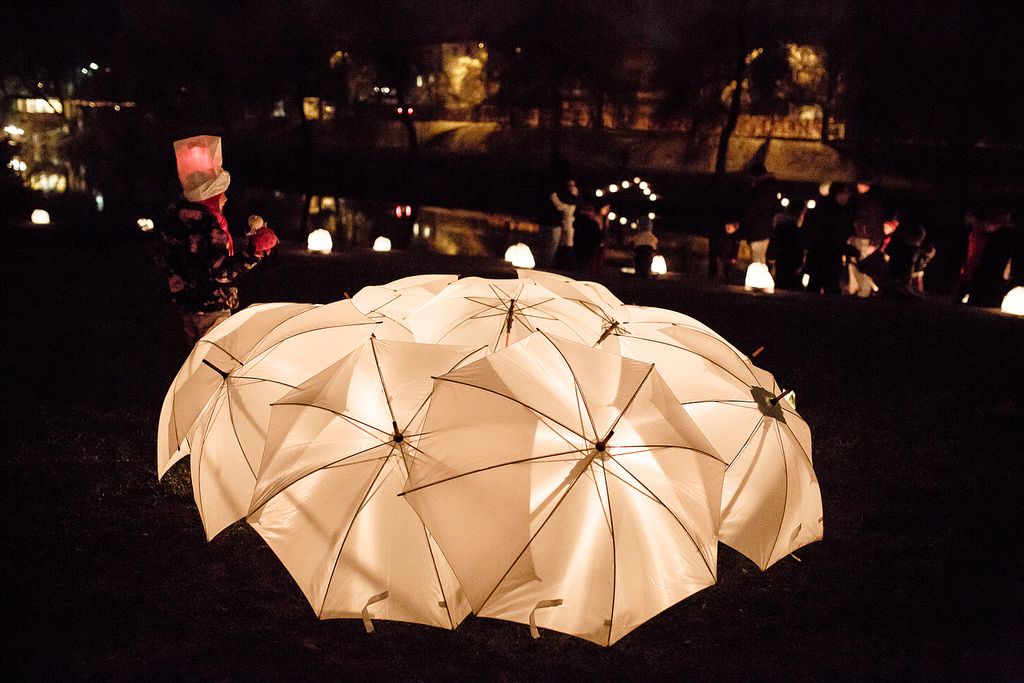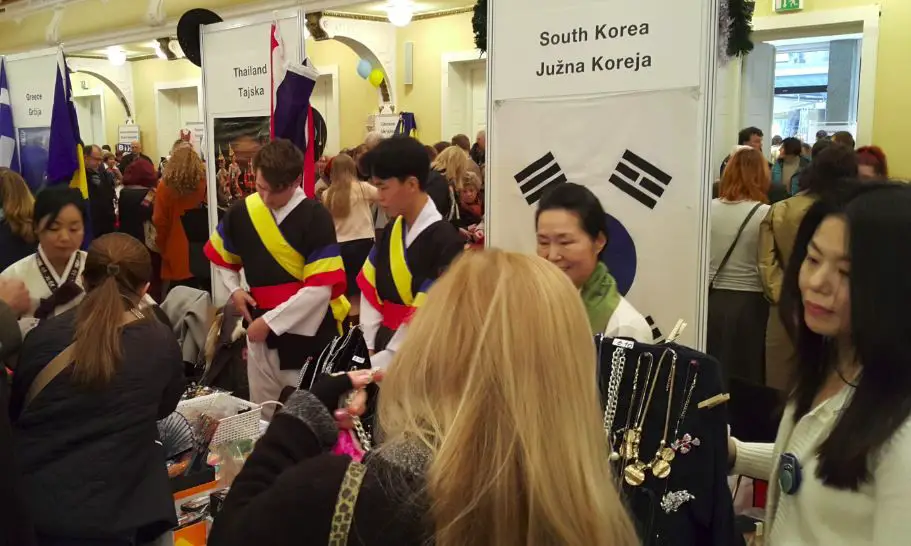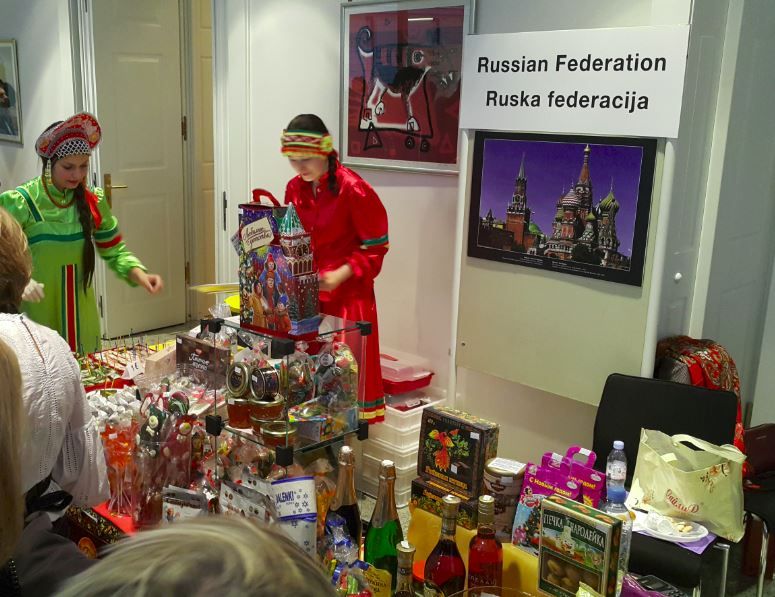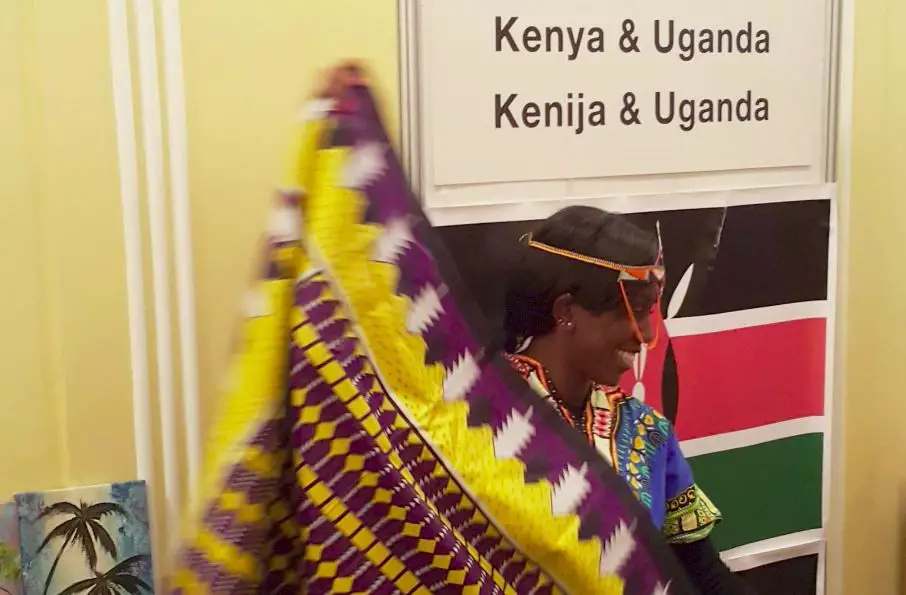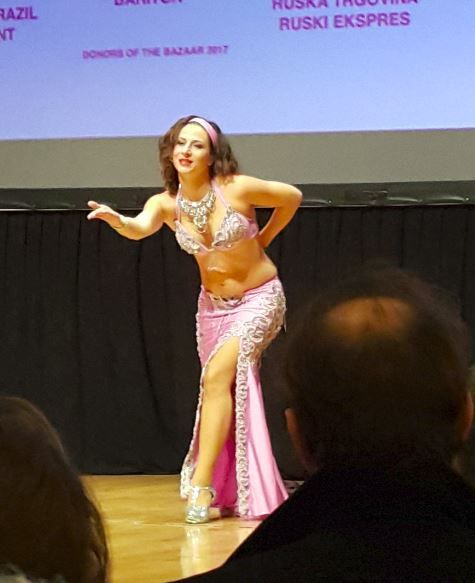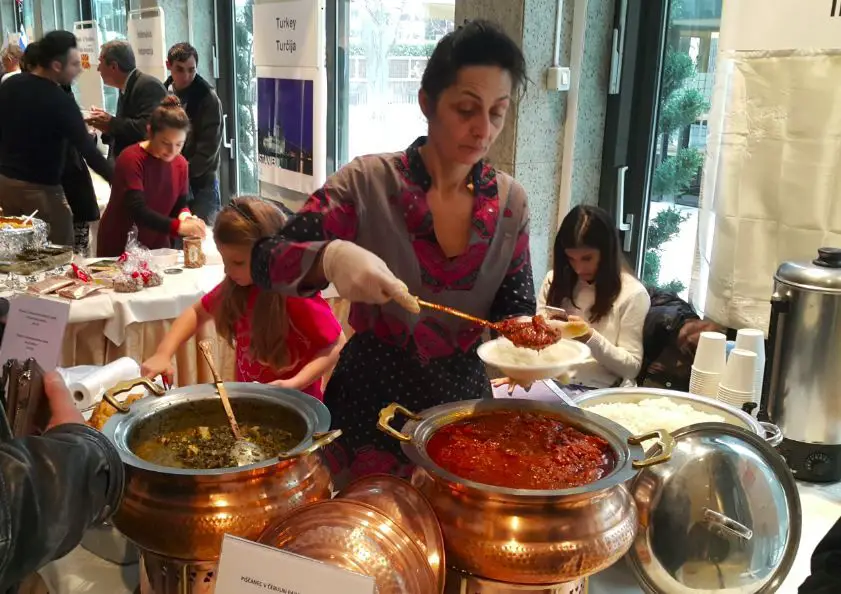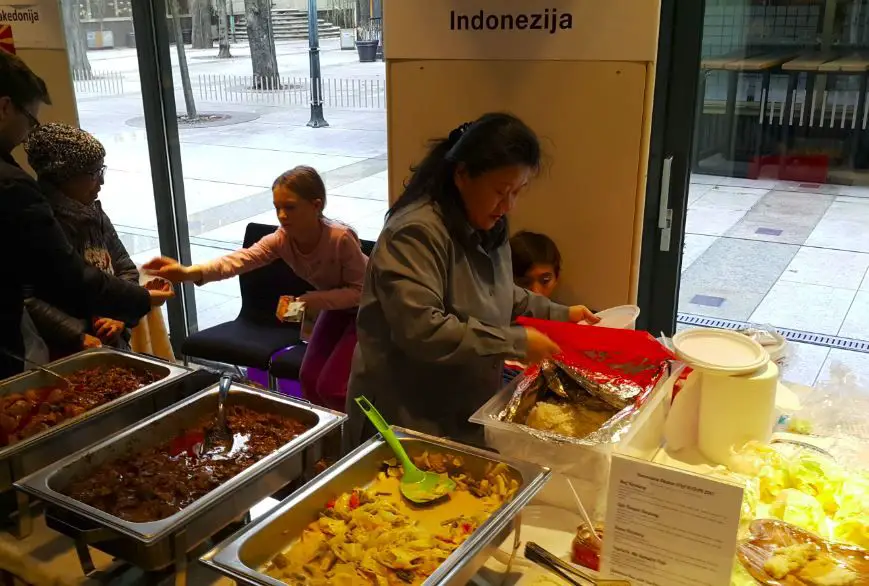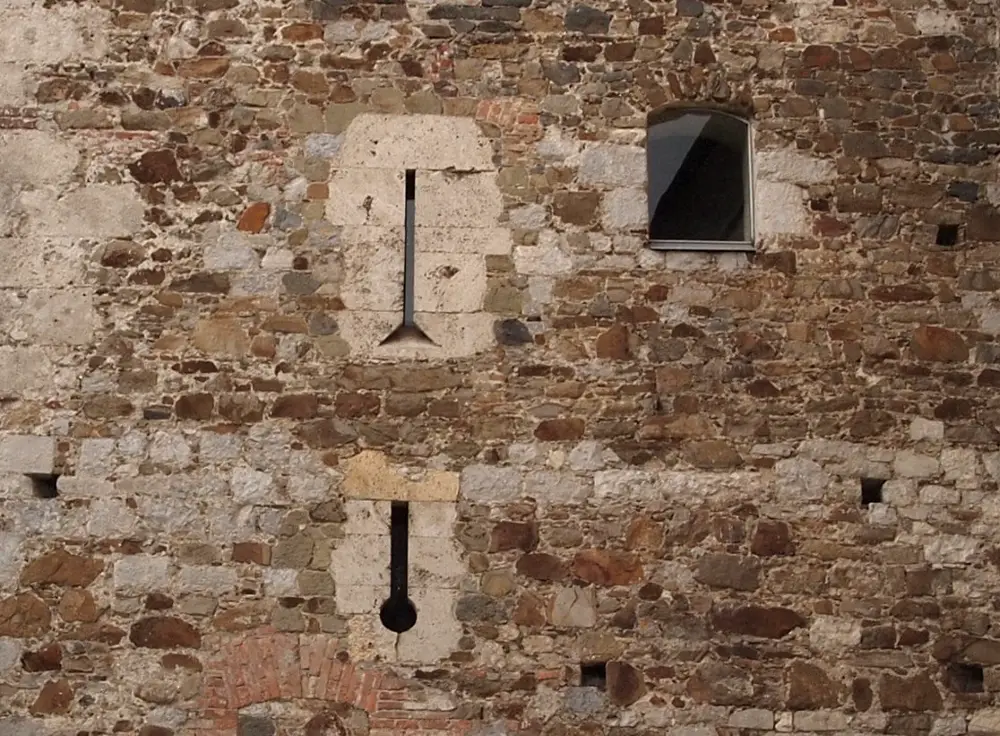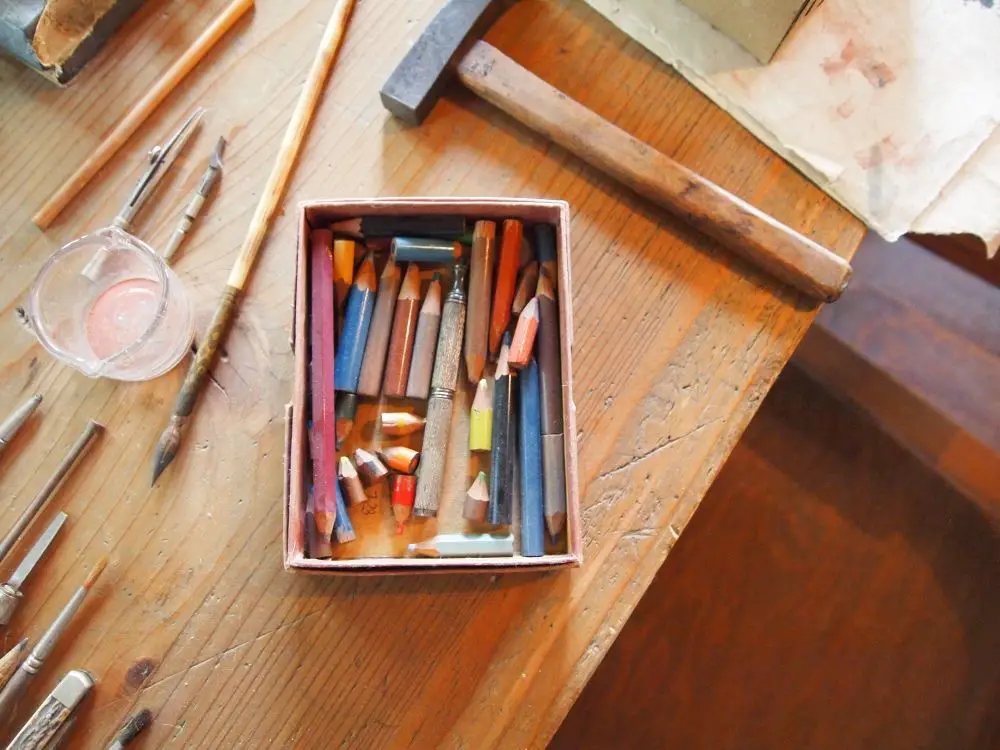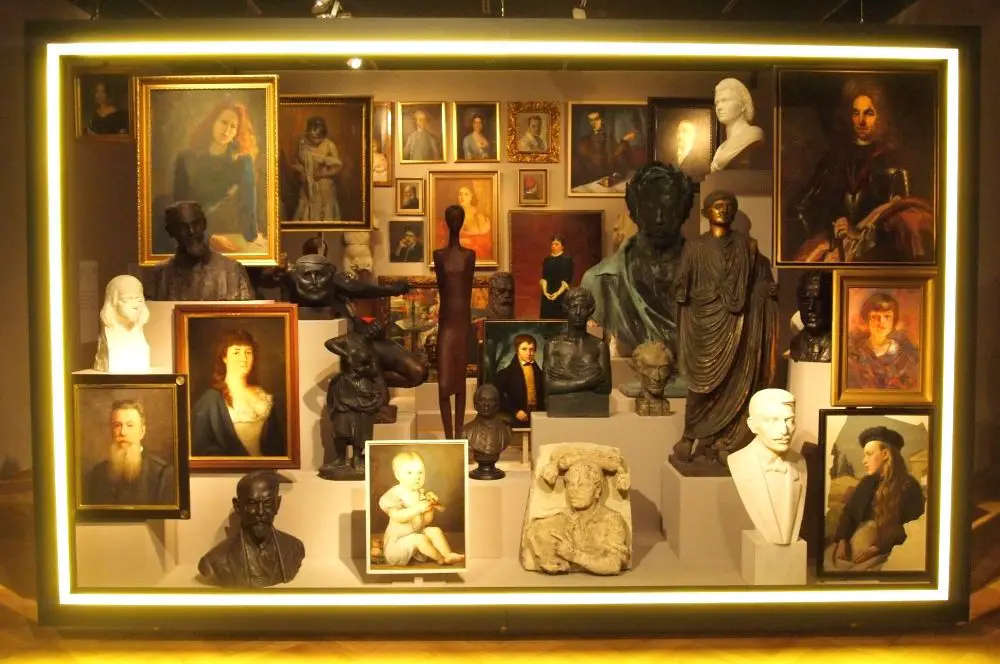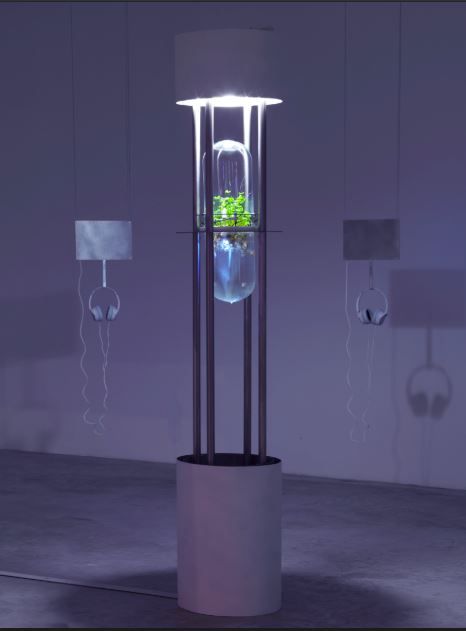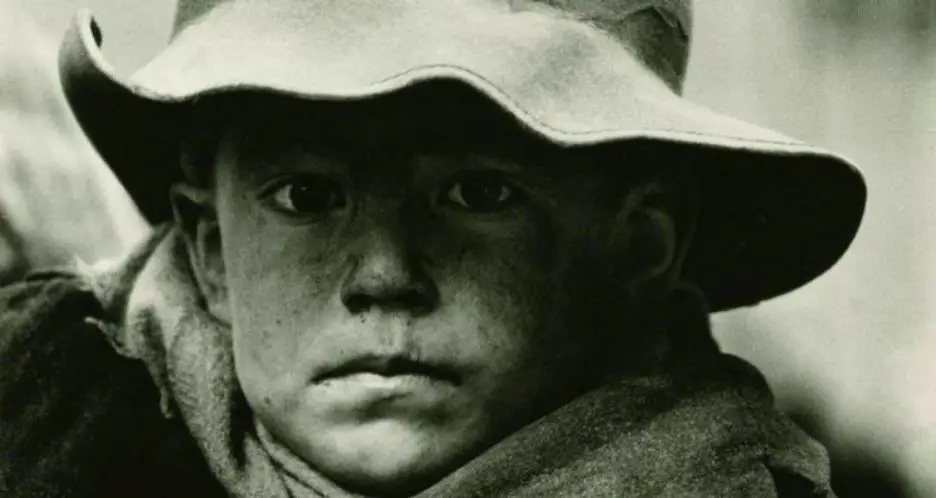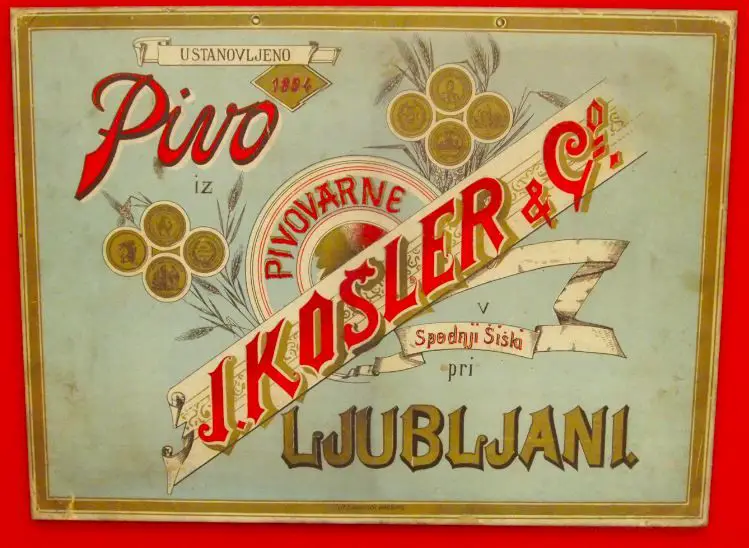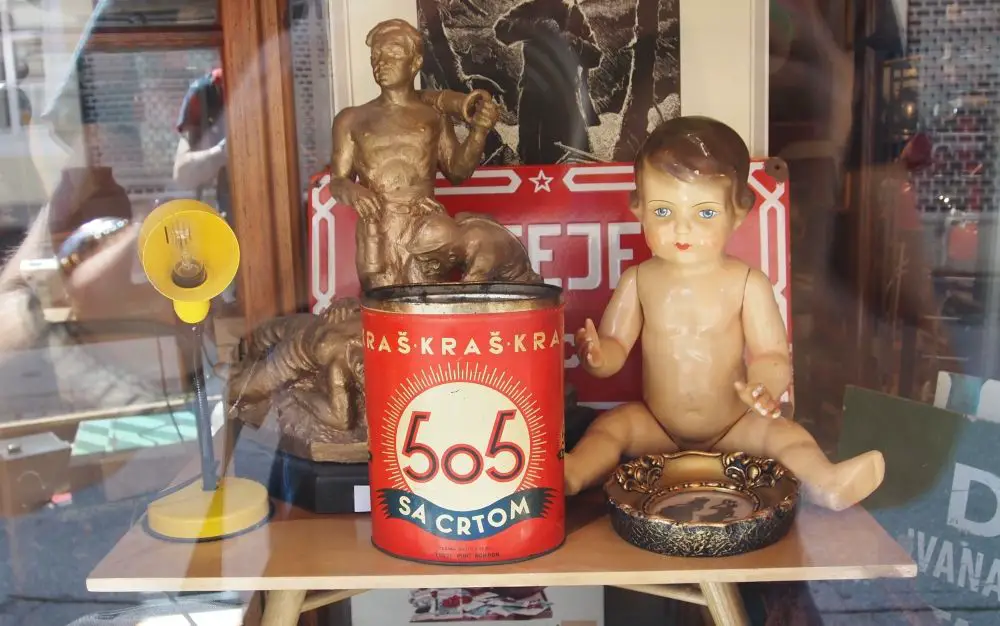Lifestyle
November 29, 2018
As has been reported on many other occasions, there are “three good men” that bring gifts in Slovenia in December.
These papa Smurf clones arose from attempts by various ethico-political systems to erase the “barbaric” pagan rituals that have taken place during the Winter Solstice since pre-history, and after failing to get rid of them they were adopted and restyled in the image of the dominant “religion”, assuming various roles to meet the political demands of the day.
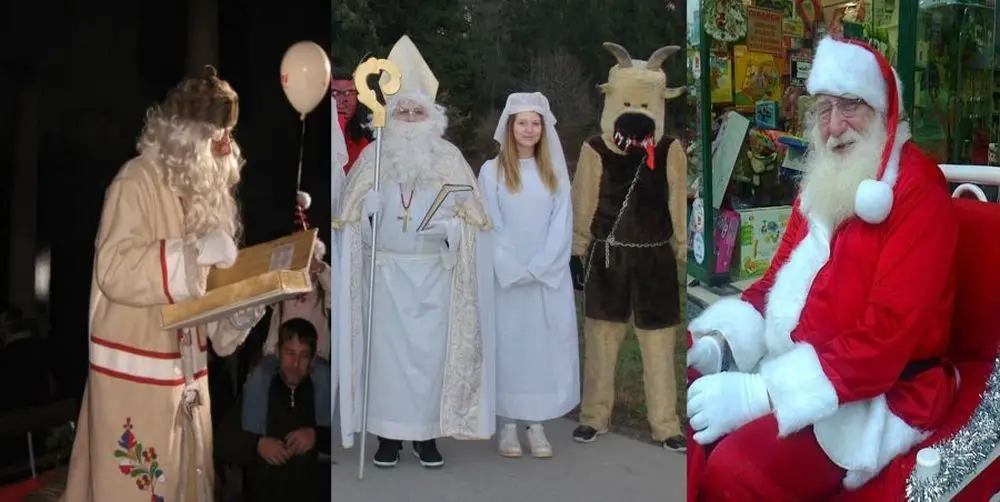
Currently in Slovenia, St. Nicholas (Miklavž), who brings gifts to children on the Eve of December 6, and Grandpa Frost (Dedek Mraz), who brings them on New Year's Eve, are in increasing competition with each other as much as they are with Santa Claus. Božiček, or the Little God, contrary to expectations, is in fact the one most closely associated with Slavic pagan celebrations of the Winter Solstice, one of the two most important pagan holidays, with this being one possible explanation as to how and why the birth of Jesus was chosen to be celebrated around this particular time.
So the first one to arrive, St. Nicholas, is a saint, known for his good deeds, also a protector of sailors and fishermen, which is why churches that are dedicated to him are usually found by important maritime and river routes. These include the Ljubljana Cathedral, also known as St. Nicholas Church, that lies by the once important traffic route of the river Ljubljanica.
In his role of a good man that brings gifts to the (good) children, St. Nicholas is called Miklavž. Since the real man was a bishop, he is wearing a bishop’s liturgical clothes, and carries a book that contains the names of all the children that were good and those that were bad. He is accompanied by angels and devils, and we can imagine which children will meet whom.
This is where you can meet Miklavž this winter:
Ljubljana: December 5, 2018 at 17:00
Miklavž will descend in the funicular to Krekov trg (the site of the Puppet Theatre) at about 17:00, and then with his entourage with pockets full of sweets head towards Prešeren Square, where he will address the public and then disappear into the Franciscan Church. You can get some idea of the action in the following video from last year.
Kamnik: December 5, 2018 at 18:00
On the slope of the Little Castle (Mali grad) there will be a show “Two Brothers and a Father”, followed by the arrival of Miklavž. In case of bad weather the event will be moved to the Home of Culture (Dom Kulture).
Vrhnika: December 5, 2018 at 17:00
Visitors will gather at Cankar Memorial House, where firefighters will assist them in lighting torches. Together the caravan will then head to the top of the Holy Trinity Hill, where they will listen to the children’s church choir and afterwards meet Miklavž with his entourage.
Celje: December 5, 2018 at 17:00
Miklavž and his entourage will arrive at Krekov trg at about 17:00.
Šoštanj: December 5, 2018 at 18:00
You are invited to join celebrations at trg Svobode.
Domžale: December 1, 2018
People can meet Miklavž between 8:00 and 13:00 at the central Market Place.
Zagorje ob Savi: December 5, 2018 at 18:00
The Miklavž procession will start at “komunala” at 18:00 and head towards the city platform, where it will be received by the Mayor, who will switch on the Christmas lights at 19:00.
I went to SILA’s annual bazaar for the first time last year and realised how foolish I’d been in not going before, and made plans to ensure not only that I’d be there this year, but arrive earlier and hungrier. It really is an event to look forward to, one in which the international community in Ljubljana takes centre stage to celebrate its diversity and start the festive season with a focus on charity.
Photo: Neža Loštrek
Photo: Neža Loštrek
As reported in a previous story, the Slovenian International Ladies Association, which this year is celebrating its 25th anniversary, was originally established as a social group for the wives of diplomats and foreign businessmen stationed in Slovenia. However, as times have changed so has the group, which is now open not only to any foreign woman living in Slovenia, but also Slovenes. SILA organises a full and varied programme of social, educational, cultural and sporting events for its members, but the focus of the year is its annual bazaar, which takes place this Sunday, December 2, from 10:00 to 16:00 in the ballroom of the Grand Hotel Union.
Related: Why you should consider joining SILA if you’re a woman in Ljubljana or nearby
Photo: Neža Loštrek
Photo: Neža Loštrek
There's Indian food.... Photo: Neža Loštrek
...Indonesian food... Photo: Neža Loštrek
...and Iranian food, and that's just the 'I's. Photo: Neža Loštrek
This year’s bazaar will be special one, since it marks SILA’s 25th anniversary, and the year in which the group received Slovenia’s “Order of Merit” medal from President Borut Pahor – also due to make an appearance on Sunday – for the good work it has done in the country over the last quarter century.
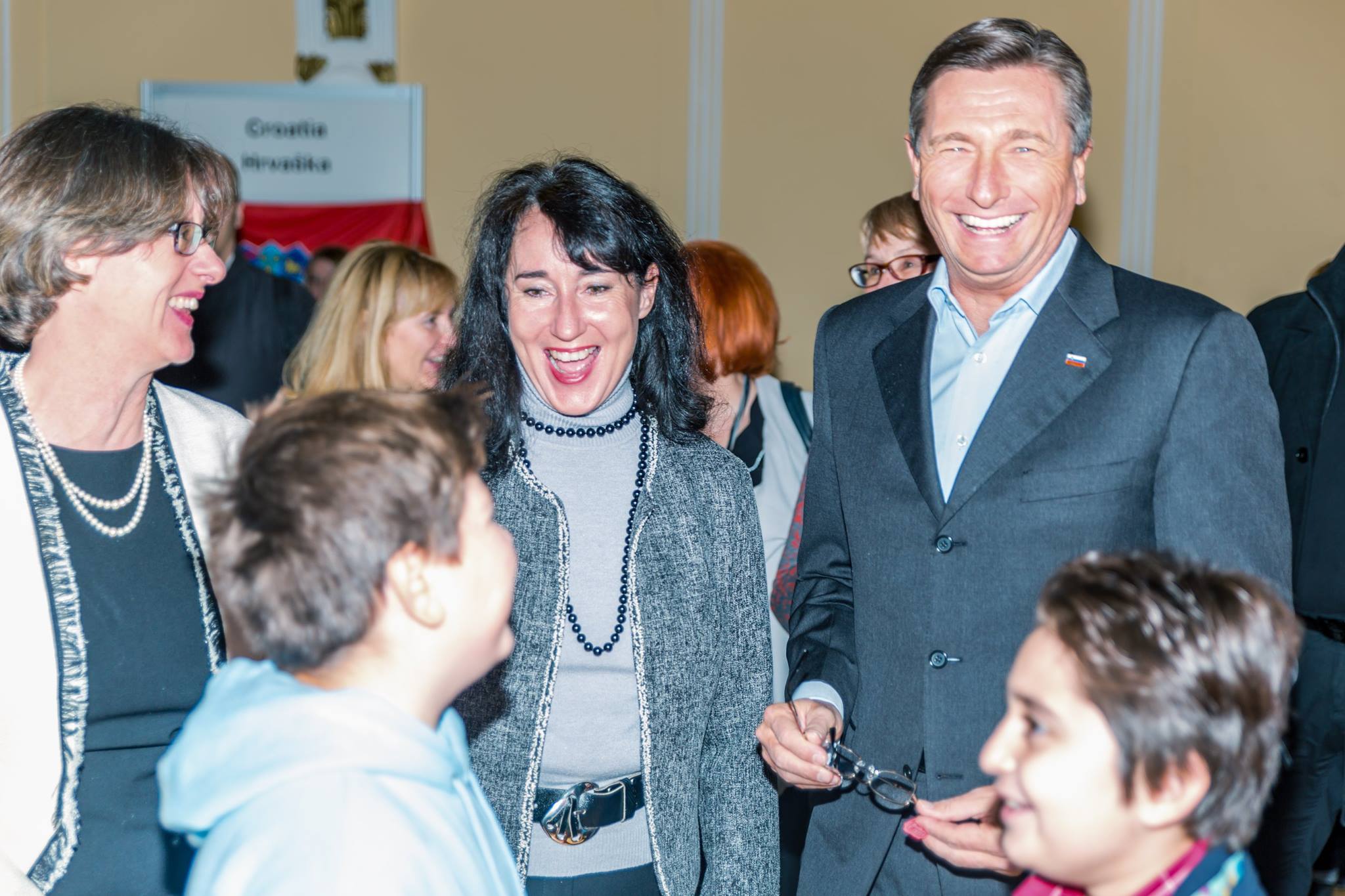
President Pahor at a previous bazaar. Photo: sila.si
Such work is the real focus of the bazaar, which raises money for charity. This year the targets are the elderly in different areas of the Slovenia, with the money raised from the event – including from a prize draw – being used to support projects sited in Jesenice, Novo Mesto, Krško, Slovenji Gradec and Ljubljana.
More specifically, the charities that any visitor to the bazaar will be supporting are:
Organisation ALTRA: Providing care, help and support for people with mental health problems and their relatives in Slovenia.
Ljudska Universa Jesenice and the project "Elderly for Elderly", supporting elderly people on low incomes.
The purchase of therapeutic devices for a home for persons with severe mental disorders in Novo Mesto
ASPI: An organization for adults with Asperger's syndrome and their parents.
School supplies for the children at Ljudska Univerza Krško.
MOCIS Slovenj Gradec, which needs furniture for a multi-generation centre.
Overall, SILA’s annual bazaar is a fantastic way to start the festive month, with food, music, colour, an international spirit and the opportunity to give back to, and be part of, the wider community in Slovenia, while celebrating differences and enjoying each other’s cultures. A highly recommended event, from 10:00 to 16:00 Sunday December 3, in the ballroom of the Grand Hotel Union (the entrance on Nazorjeva Ulica, next to the Atelje restaurant).
The Active Healthy Kids Global Alliance has released a report examining physical activity among children in 49 countries, with Slovenia, Japan and Zimbabwe having the most active youngsters. However, while the story is a good one in these three nations, the overall trends in other countries indicate that most children are not getting enough activity to ensure health growth and development.

Part of the press kit. www.activehealthykids.org
The study claims that the high levels of physical activity among Slovenian children are related to the central role that sport plays in the national identity, as well as the fact that the fitness of all children aged 6 to 19 is measured each year using a standardised test. Slovenia thus obtained a top grade of A- for overall physical activity, a B+ for family and peers and an A for government, which assesses the strategy and resources applied by the state to ensure more active lifestyles.
With regard to Japan, the report notes that the country “has a highly established ‘walking to school practice’ that has been implemented since the School Education Act enforcement order, enacted in 1953. It states that public elementary schools should be located within no more than 4 km, and for public junior high schools no more than 6 km from the student’s home.”

Part of the press kit. www.activehealthykids.org
It’s a similar story in Zimbabwe, albeit for different reasons, as “overall physical activity is mostly affected by active transportation which, for the majority of the children in Zimbabwe, is a necessity in everyday life.”
While Slovenia got an A- for “overall physical activity”, the United States got a C-, with the full report available here if you’d like to see where your country stands.
STA, 26 November - The international research project Implant Files has revealed that most Slovenian hospitals have no digital records on implants they put in patients. There is also no proper system of informing the Agency for Medicinal Products and Medical Devices on implant-related complications.
The only hospital in Slovenia with detailed digital records on all implants used is the Orthopaedic Hospital of Valdoltra in Ankaran, while other hospitals mostly still have them only in the paper form, including the National Institute of Public Health.
The digitalisation of medical data at Valdoltra started in the late 1990s and the hospital started building its own implant registry in 2002. According to the data from the ZZZS health insurance fund, the hospital conducted almost a quarter of all hip implant operations and almost a third of all knee replacements in Slovenia last year.
Statistical data show that there were no complications during most of the hip and knee surgeries, said journalists Anuška Delić and Maja Čakarić of the Oštro centre for investigative journalism in the Adriatic region.
But Delić and Čakarić warn that in Slovenia data on complications involving implants are difficult to find, as the system of reporting to the Agency for Medicinal Products and Medical Devices does not seem to be working properly.
In the last three years, the agency was notified of 258 complications related to implants and only 10% of these reports came from medical institutions, which are obligated by law to report to the agency within 24 hours after any complications.
In a response to the report, the agency said it was aware of the risks for patients, adding that as the competent body it had supervisory mechanisms at its disposal for the protection of health of Slovenian and EU citizens.
Its inspectors are performing supervision over producers and retailers and wholesalers of medicinal products and are overseeing their use in hospitals, healthcare centres, retirement homes and other institutions providing medical care.
The pharmaceutical inspection so far has not established major departures from the standards which would suggest that medicinal products on the Slovenian market are ineffective or pose a risk for users, the agency added.
It noted that the relevant EU regulations would be updated and enter into force in 2020, with the main advantages being better quality, safety and reliability of medicinal products and better transparency of information for consumers.
According to unofficial information, doctors more frequently report about problems to the implant manufacturers, although reporting to them is voluntary.
Most medical implants in Slovenia come from four companies
Data on implants by Valdoltra, UKC Ljubljana, UKC Maribor and the general hospitals of Celje, Jesenice and Novo Mesto show that more than half of the implant market in Slovenia is controlled by four big manufacturers: Zimmer Biomet, Johnson&Johnson, Stryker and Lima, the newspaper Večer reports in today's spread on the topic.
The 250 journalists from 36 countries participating in the research project found that 1.7 million injuries and almost 83,000 deaths in the last decade could be linked to implant fractures, decay, bending or other malfunctions. For Slovenia no such data is available due to poor record-keeping.
A national registry of implants should, however, be set up by Valdoltra as of next year. The hospital's current detailed records show that on average some 12% of hip implants and some ten knee implants have to be replaced a year.
Once the registry is completed, the data on implants will be available in an on-line application. According to the National Institute of Public Health, the digitalisation and the forming of the registry would cost EUR 30,000 and just as much should be spent annually for updating and maintaining the registry.
But for the time being, Valdoltra expects no additional costs as its existing staff is expected to work on the project.
The Implants Files international project website can be found here
As of writing the lights and tree are up, but nothing lit, and so for a few more days you have the chance to see a skeletal display. This changes at 17:15 on Friday, November 30, when the switch will be flipped in Prešeren Square, somewhere near the tree, and the whole pedestrianised area will come alive, as seen in this promotional video from 2017.
Yes, December in Ljubljana is a magical time, with the lights designed by Zmago Modic - the man behind the summer rain - coming out once again but moved to different positions, making things both familiar and fresh. In addition to the lights there are stalls selling mulled wine, sausages, chestnuts and other seasonal delights, along with decorations, hats, gifts, that kind of thing, with live and recorded music to keep you on your toes.
One other event to look out for at the end of the week is SILA's annual bazaar, taking place on Sunday in the Grand Hotel Union from 10:00 to 16:00, where you can enjoy food from around the world (often cooked by embassy chefs), as well as other items, cultural performances and a prize draw. I ate Indian food twice on my visit last year, and aim to go earlier and hungrier this year. You can read more about SILA here.
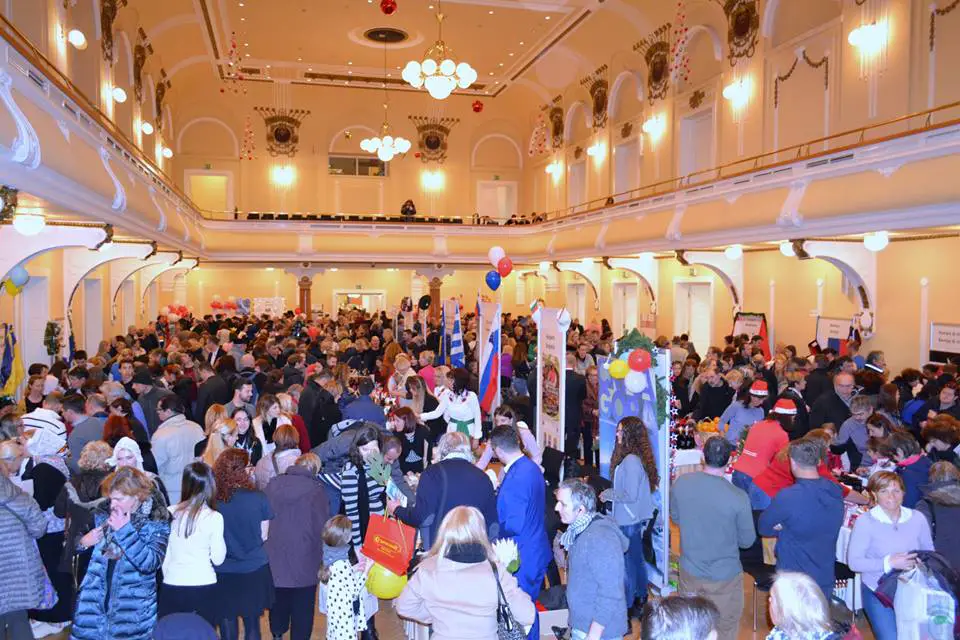
A previous bazaar. Photo: SILA
As ever, clicking on the venue names in the list below should get you more details with regard to the time, price and location, as well as other events on this week in the same place. Finally, if there's something you want to promote in a future edition of What's on in Ljubljana please get in touch with me at flanner(at)total-slovenia-news.com
Getting around Ljubljana
If you want to get a Ljubljana Tourist Card, which gives you travel on the city buses and entry to a lot of attractions, then you can read more about that here, and if you want to use the bike share system, as useful for visitors as it is for residents, then you can learn more by clicking this. Visitors with reduced mobility will be pleased to find that downtown Ljubljana is generally rated as good with regard to accessibility, and that there’s a free, city-sponsored app called Ljubljana by Wheelchair highlighting cafés, attractions and so on with ramps, disabled bathrooms and Eurokey facilities, which you can read about and download here. If you’re driving into town and don’t know where to part, our guide to how to park in Ljubljana is here.
Want / need cigarettes but the stores have closed? Here's an incomplete list of bars downtown that will satisfy your craving for the demon weed in various parts of the downtown area. While if you’re having trouble with the ATMs then here’s a guide to the Slovene you’ll see on screen. If you get a hangover then find out where to get paracetamol (and prescription drugs) in Ljubljana here, while details on emergency birth control can be found here.
Ljubljana is a small and relatively safe city, but if need to contact the police then there’s a special number for foreigners, and that’s 113.
Cinemas and films playing in Ljubljana this week
You can read about all the cinemas in town here, while a selection of what’s playing this week is below, and note that kid’s movies tend to be shown in dubbed versions, so do check before driving out to a multiplex and dropping off the young ones if they can't understand Slovene. That said, parents should pay attention to Kinobalon, which is Kinodvor's regular weekend series of film screenings and events for children, from babies on up, witrh special parent/child events, "first time in a cinema" screenings, and babysitting. Learn more about it here, and see the current schedule here. (And if you like watching trailers with subtitles as a way of learning Slovene, then catch up on some from earlier this year here).
One film festival that continues this the week, the Ljubljana LGBT Film Festival, which runs until December 02. You can learn more about the festival, and see trailers for many of its films - all of which will be shown with English and Slovene subtitles, if needed - here.
Kinodvor – The arts cinema not far from the train station, which has a nice café with books and magazines, is playing, among other features: Winter Flies, The House that Jack Built, The Children Act, Posledice, Igor Zabel: Kako narediti umetnost vidno?, Un beau soleil intérieur and The Gruffalo and the Gruffalo’s Child, with the latter also shown in a Sunday morning babysitting presentation. There’s also a dubbed version of The Highway Rat playing.
Kinoteka – The revival house at one end of Miklošičeva is showing many of the LGBT+ festival films, including, Chi salverà le rose?, My Life with James Dean, Jean Genet, un captif amoureux, parcours d’un poète combatant, and Sidney & Friends. All the festival moves will be shown with English and Slovene subtitles.
Kolosej - The multiplex out at BTC City Mall is playing all the big movies, which this week include Robin Hood, The Grinch (with both subbed and dubbed versions), The House that Jack Built, Widows, Fantastic Beasts: The Crimes of Grindelwald, El mayor regalo, The Girl in the Spider's Web, Little Italy, Overlord, The Nutcracker and the Four Realms, Bohemian Rhapsody, Halloween, Johnny English 3, A Star is Born and Gajin svet.
Komuna – The cinema in a basement behind Nama department store is showing Bohemian Rhapsody, A Star is Born and The Grinch.
Clubbing in Ljubljana
Compared to some European capitals it can seem that nightlife in Ljubljana ends rather early, especially along the river, but there are still bars that stay open late and clubs were you can dance until dawn, and perhaps the best place to stumble across something interesting is the legendary Metelkova. Be aware it's a grungy kind of place and not for all tastes, but also that there's consideable variety to found within the various clubs there, from death metal to electropop, gay caberet to art noise. You can read "the rules" of the place here.
Channel Zero – Monday night is Dub Lab, this week with Domaćica Original: Dj Večer - Zenicafaria Sound (BiH). Friday you can then enjoy Elektroliza: Electro City Ljubljana #2 with electo music from DJs Kalson, Le Chocolat Noir, Alavux, Barion, and Microslav, and visual from VJ RGB.
Gala Hala – Friday night it’s Umešana jajca with dance, breakbeat and alternative hip hop, as cooked by DJs Jopa (KopajOvo; Hr), Borka (rx:tx, Tetkine radosti) and Woo-D (GOR, Tetkine radosti).
Klub Cirkus – It’s a busy week here, with Wednesday kicking things off with a party for young economists called Brucanje Ekonomistov. Thursday the space is given over to Schweppes Experience / DJ Dey & Anthony & Gaja Prestor, again offering “party music”. Friday night things get more specific with El Fuego, who’ll be playing LatinX flavoured pop, R&B, dance, reggaeton, latin house, tropical, and island beats, offering a warm escape from whatever the weather is doing outside. The week then ends on Saturday with Tutti Frutti - Slovenska Edicija. This will see music from DJs Matthew Z and Matteo Kunst, and a special appearance by Alya, the artist behind this bouncy pop song.
Klub K4 – O šit, the klub 4 kool kids is offering an electronic dance music all-nighter on Friday, with music from DJs Eliaz Live! (Sw:idr), Looni (Elektronika 69), Kosheer (Past Present), Čunfa (TRITE) and Nebelung (Courtyard), with VJ 5237. Saturday there’s another all-night party, with Sezam & Friends playing house, techno, acid, electro, rave, and bass, and the tunes being mixed by Commercial Break, Gabi, Softskinson b2b Krilc, and Levanael b2b Felis Catus.
Koncertna Dvorana Rog – The alternative to Metelkova that sits at one end of Trubarjeva will have an all-nighter from Bass Fighters on Friday, presenting a drum’n’bass audiovisual experience, with one of the DJs being Theejay. On Saturday it’s the turn of od:vod pres. Infoline, .
Harm reduction and drug testing
Drogart is an organization that aims to minimise harm on the party scene, and offers drug-testing services and reports on their webpage. It’s in Slovene, but you can Google translate it or work things out yourself, andout story on the group is here. One thing they recently warned of were pink Pharaoh pills with around twice the normal MDMA content (measured at 261 mg). See pictures and learn more here, but do remember that all the usual drugs remain illegal in Slovenia, while our in-depth profile of the group is here. We've also heard increasing reports - albeit anecdotal - of women's drinks being spiked in the city, so take care and let friends know where you're going.
Things to do with children in Ljubljana
You can find our Top 12 list of things to do with kids in Ljubljana here. If want to read more about the philosophy behind the wonderful House of Experiments look here, while our trip to the Museum of Illusions is documented here, and there’s always riverside walks, ice cream and pizza.
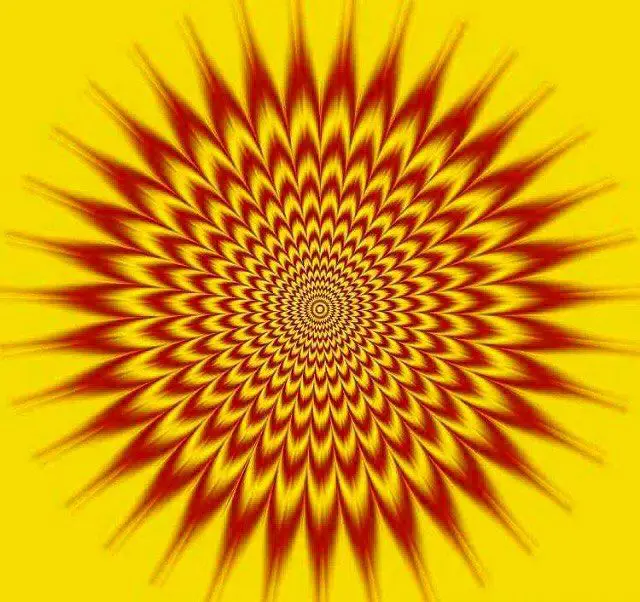
Photo: JL Flanner
Facts about Ljubljana Castle
The city’s main tourist attraction is the Castle, and you’ll enjoy your visit a lot more if you know what you’re looking at, so take a look at our 25 Things to Know about Ljubljana Castle and learn, among other things, why some of these holes are round and some triangular.
Photo: JL Flanner
LGBT+ Ljubljana
If you want to learn more about Ljubljana Pride, then take a look at our interview with its president here. If you're looking for more general links on "gay Slovenia", including a history of the scene and various projects, then you can find that here, while our stories about the community can be found here.
There's an LGBT+ Film Festival in town from thr 24th on, and you can learn more about that, and see trailers for many of its films - all of which will be shown with English and Slovene subtitles, if needed - here.
Klub Monokel – This lesbian bar in Metelkova is open every Friday night, but otherwise nothing seems to be planned..
Klub Tiffany – The gay bar next door to Monokel is also open every Friday, and every Monday until June 2019 there's tango at 18:00. Special this week is Saturday night's event, A Star is Born. Per the promotion: "From the Trash-Out team who brought you the Britney and Mean Girls Trash-outs comes a new party to open the festive December. Come out of the cold nooks and crannies and try to come on top for one night. Let your inner diva come out and steal the spotlight. Claw you way up to the pedestal and reach for the stars; thats how stars are born! Music: The last decade of hits with Lady Gaga in the front line."
Pritličje – This is the closest Ljubljana comes to a "gay bar" so it's a good thing this LGBT-friendly cafe / bar / events space is such a good one, and open from morning to night.
Museums and galleries in Ljubljana
Most public galleries and museums are closed on Mondays, although not the National Museum.
Plečnik's desk. Photo: JL Flanner
Plečnik’s House is worth a visit if you want to learn more about the architect who gave Ljubljana much of its character. Read about our guided tour here. Something on for a limited time is Plečnik and the Sacred, showing here until January 20, 2019.
Cankerjev dom – Running until the end of February 2019 is an exhibition titled Ivan Cankar and Europe: Between Shakespeare and Kafka. This is “An examination of Cankar’s art through an analysis of influences and interpretations, and juxtaposition with contemporary European writers. The visually elaborate architectural and graphic layout, supported by audio-visual media, installation art and diverse visual highlights, offers a vivid account of Cankar’s excellence, his comprehensively exquisite aesthetic and artistic vision.”
City Art Gallery – Drago Tršar recently had a show at the main Moderna looking at his monumental works, and now this smaller gallery in the Old Town, not far from Town Hall, is showing some the sculpture’s erotic works, on until January 20, 2019. It’s being promoted with the following example.
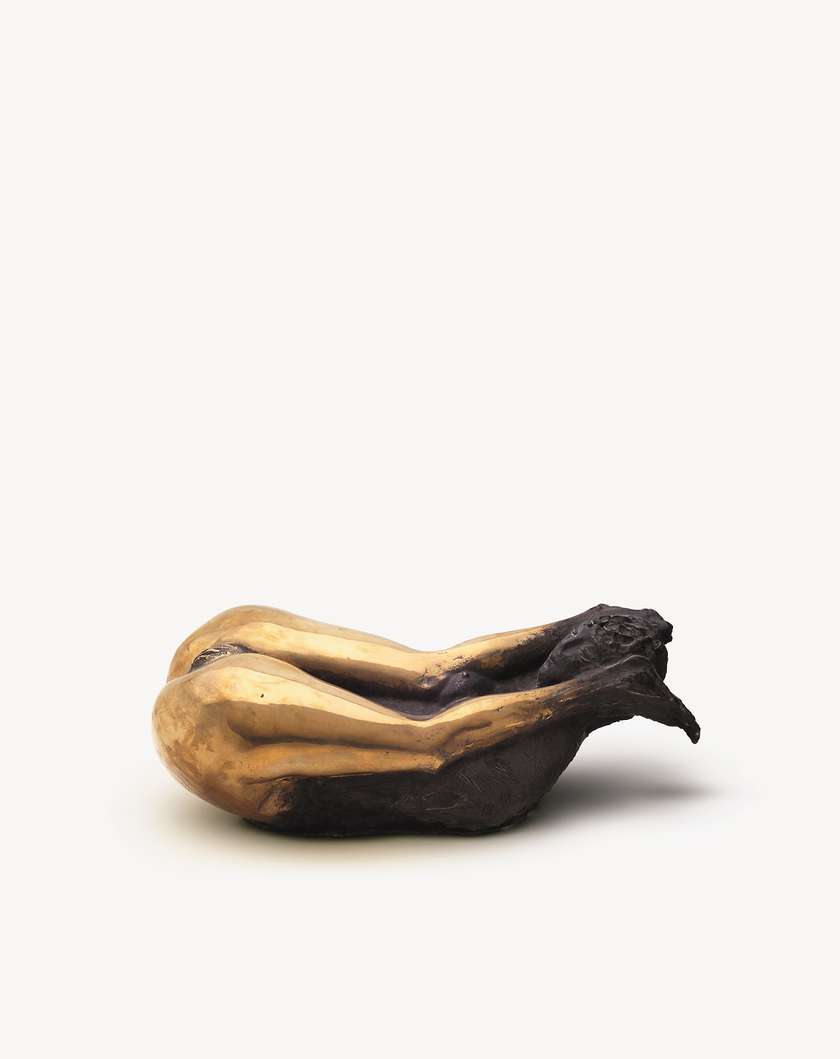
City Museum – The Museum in French Revolution Square has an exhibition on the writer Ivan Cankar that’s on until the end of February 2019, with pictures, books and manuscripts, all presented in Slovene and English. It also has a very interesting permanent exhibition on the history of Ljubljana, from prehistoric times to the present day, with many artefacts, models and so on that bring the story alive.You can read about my visit here. Until March 2019 there's a show highlighting the work Elza Kastl Obereigner (1884-1973), a pioneer Slovenian sculptress, with an example of her work shown below.
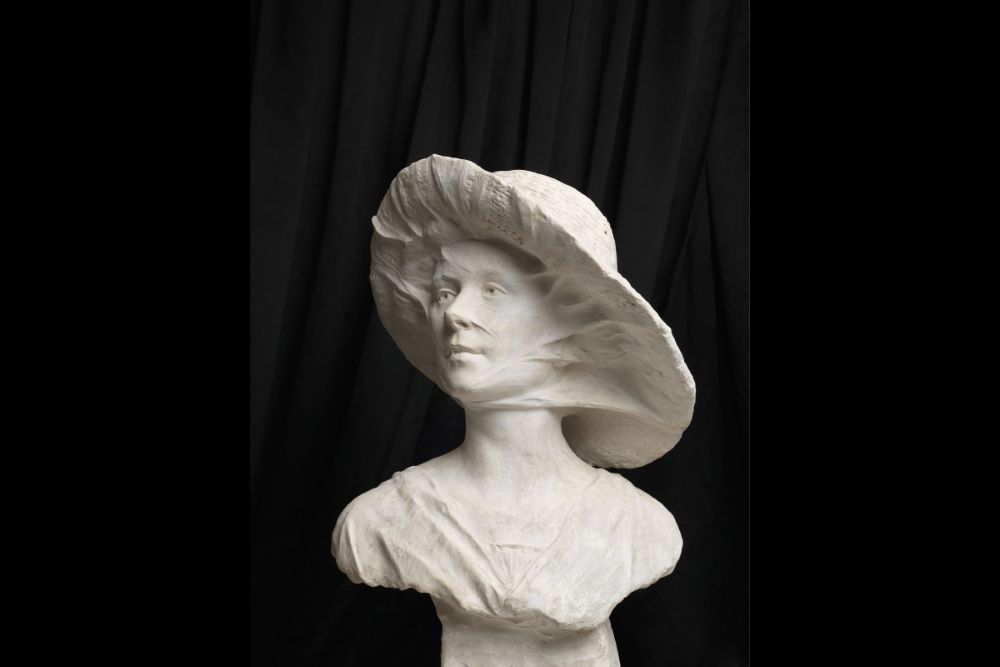
Photo: M Paternoster
The Faces of Ljubljana in the City Museum. Photo: JL Flanner
Galerija Vžigalica – Saša Spačal has a show here until January 6, 2019 called Earthlink, “working at the intersection of intermedia art, exploration of living systems and audio frequencies, links Earth to the post-human present, that includes both a seed of the future as well as a shadow of the past.” A promotional image is what's shown below.
Simbiom – ekonomija simbioze, 2016 © Dejan HabichtArhiv Moderne galerije
Galerija Kresija – Showing in the City Hall’s right atrium until December 13 is an installation, Gorazd Krnc: Tod in Ondod (Worth Not Knowing Where Knowington Is), which includes video projections
International Centre of Graphic Arts – Running from Friday until March 3 2019 there will be a show of posters from Milton Glaser, with the poster for the show shown below.
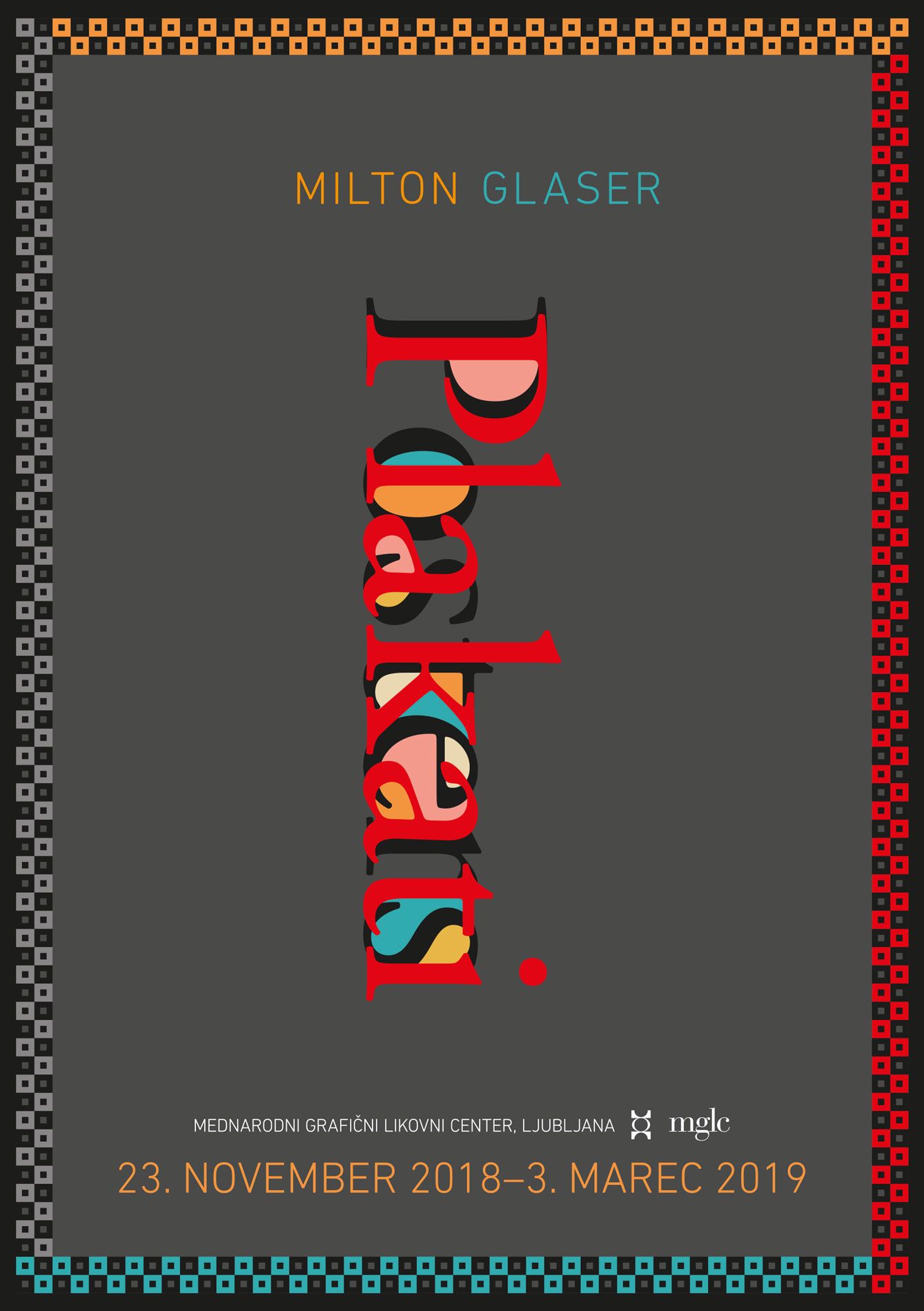
Ljubljana Exhibition & Convention Centre – Just outside the centre of town, at Dunajska cesta 18, you can see a lot of plasticized bodies at the Body Worlds Vital show, running from October 20 until January 20 2019.
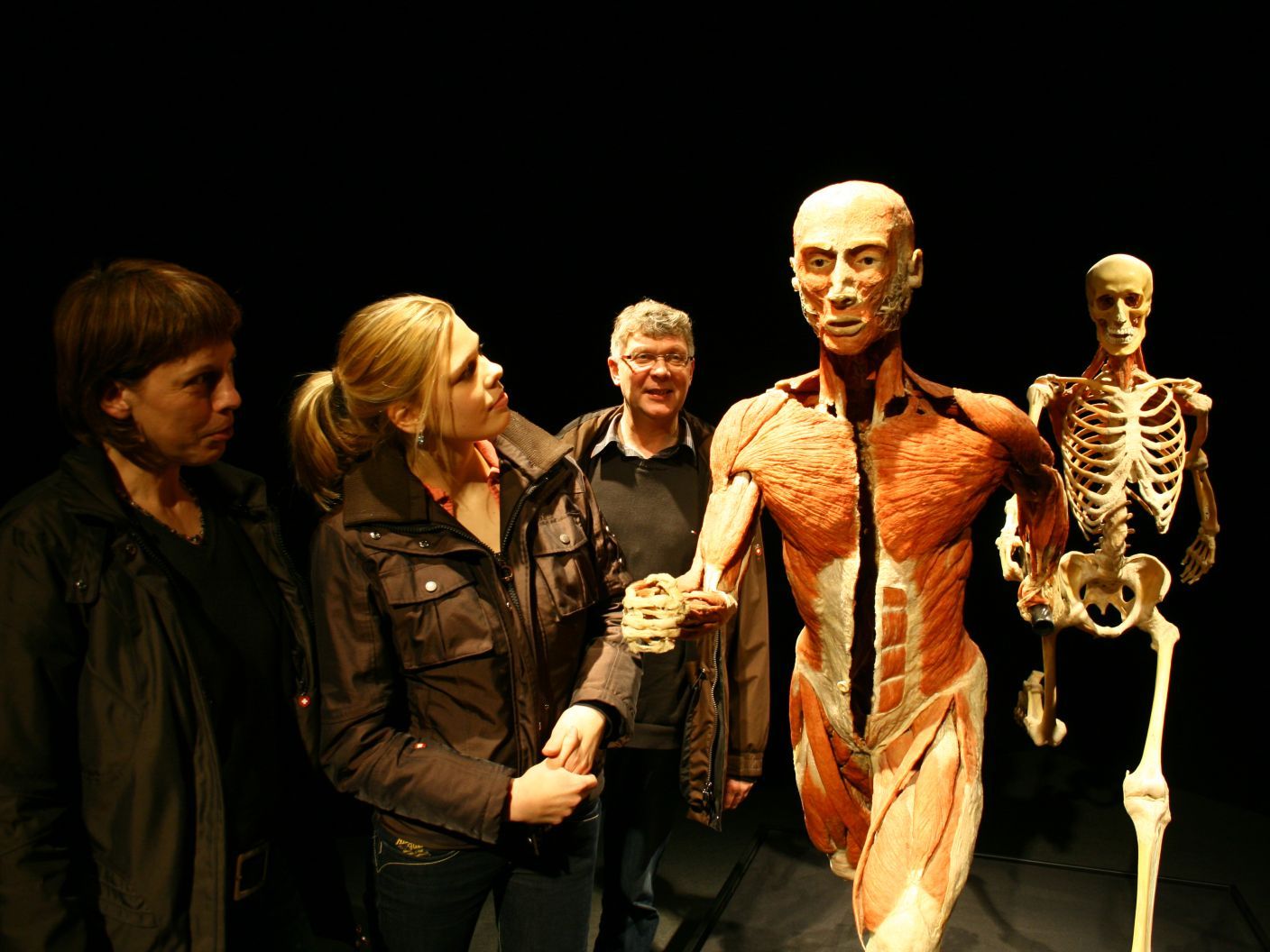
Photo: Body Works Vital
MAO – The Museum of Architecture and Design is showcasing Slovenian designers in a show called Made in Slovenia, lasting until the end of 2018: “The selling exhibition aims to present good practices of Slovenian designers and companies in the creative sector.”
Sam, 1966, fotografija na srebroželatinskem papirju. ©Stojan Kerbler
Moderna galerija – The main branch of this gallery, to be found near the entrance to Tivoli Park, has a good collection of modern art, as well a nice café in the basement, and it's latest exhibition focuses on the photographer Stojan Kerbler, which runs until January 13, 2019, and shows rural live in Slovenia for the recent past.
Museum of Contemporary History – The museum in Tivoli Park has two new shows. One is called Museum's (R)evolution 1948-2018, marking the place's 70th anniversary with an exhibition tracing its evolution through artefacts, photographs and personal stories and running until January 6 2019 (details here). There's also In Search of Freedom: 1968-2018, looking at the 1968 student protests.
National Gallery – The country’s main gallery has “the best” of what’s on offer from the Middle Ages to non-contemporary modern visual arts, and is in a great location for exploring other areas, just by Tivoli Park and opposite the main branch of the Moderna galerija. Running until February 10 2019 is a show called Ivana Kobilca (1861-1926): But Of Course, Painting Is Something Beautiful!, featuring works like the one below. You can read about our visit to the room containing scared art from the Middle Ages here, and see a picture from our trip after the two girls.
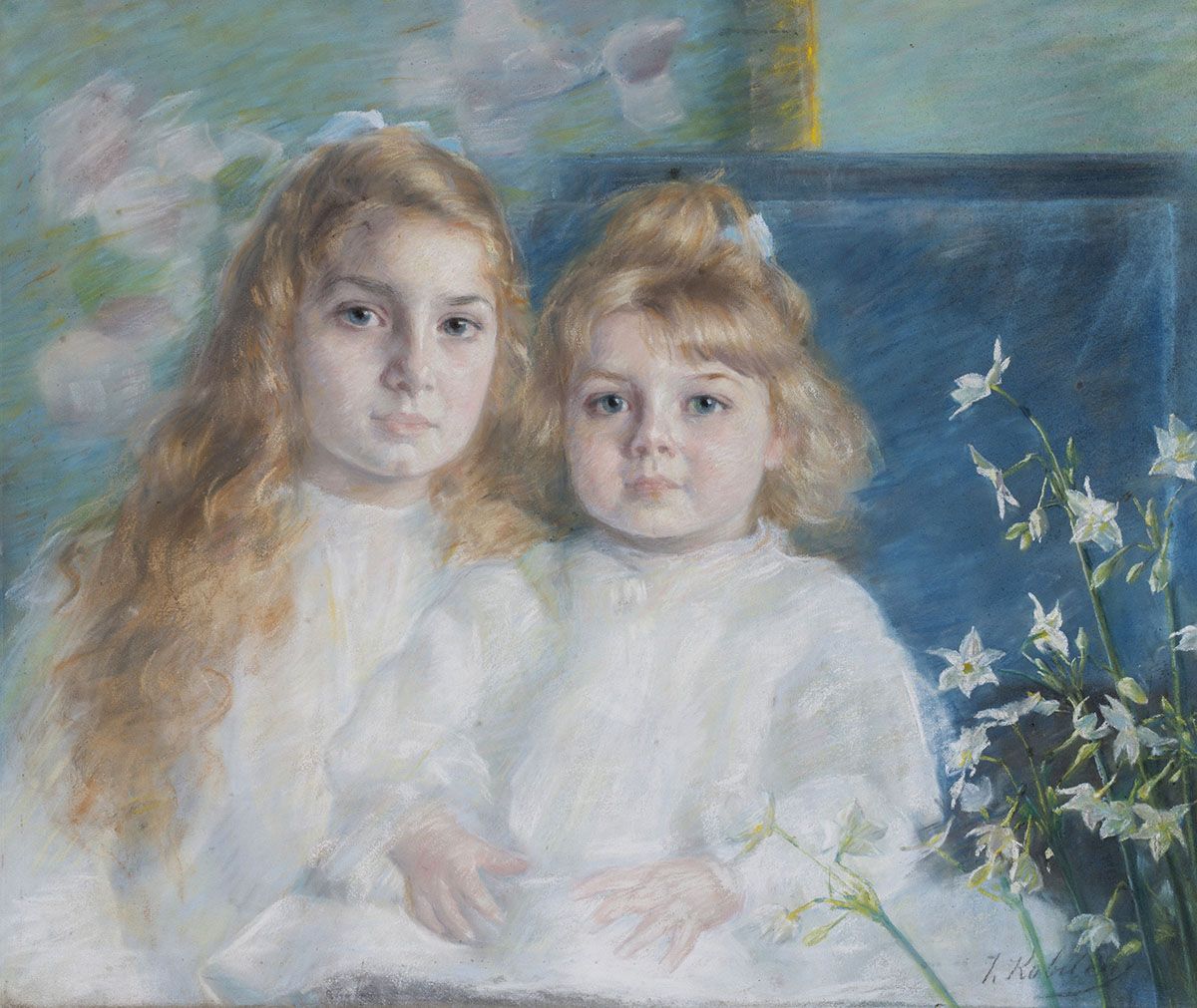
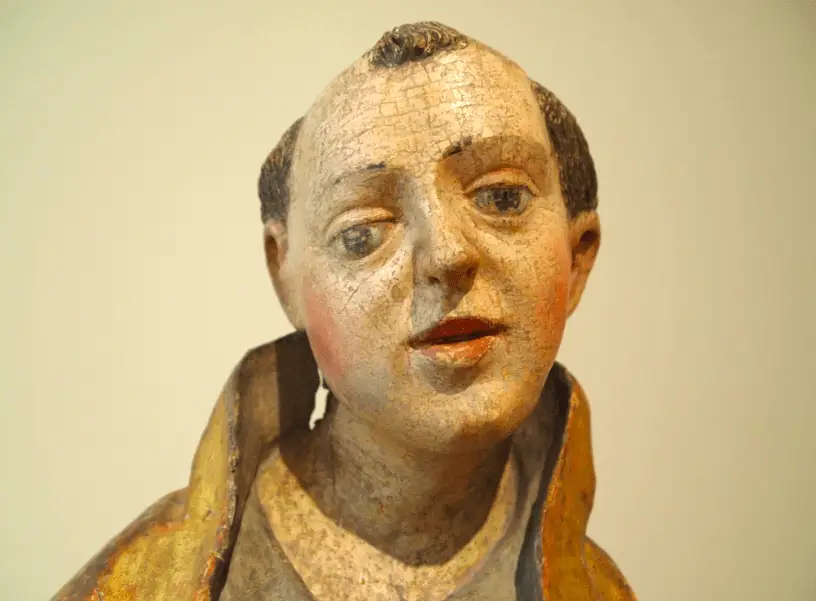
JL Flanner
National Museum of Slovenia – There’s plenty to see in the permanent collection here, from Roman times, Egypt and more, with the big draw this season being the exhibition of over 140 items of gold from Ming Dyntasy China, as reported here, and with an example below. This runs until February 15th.
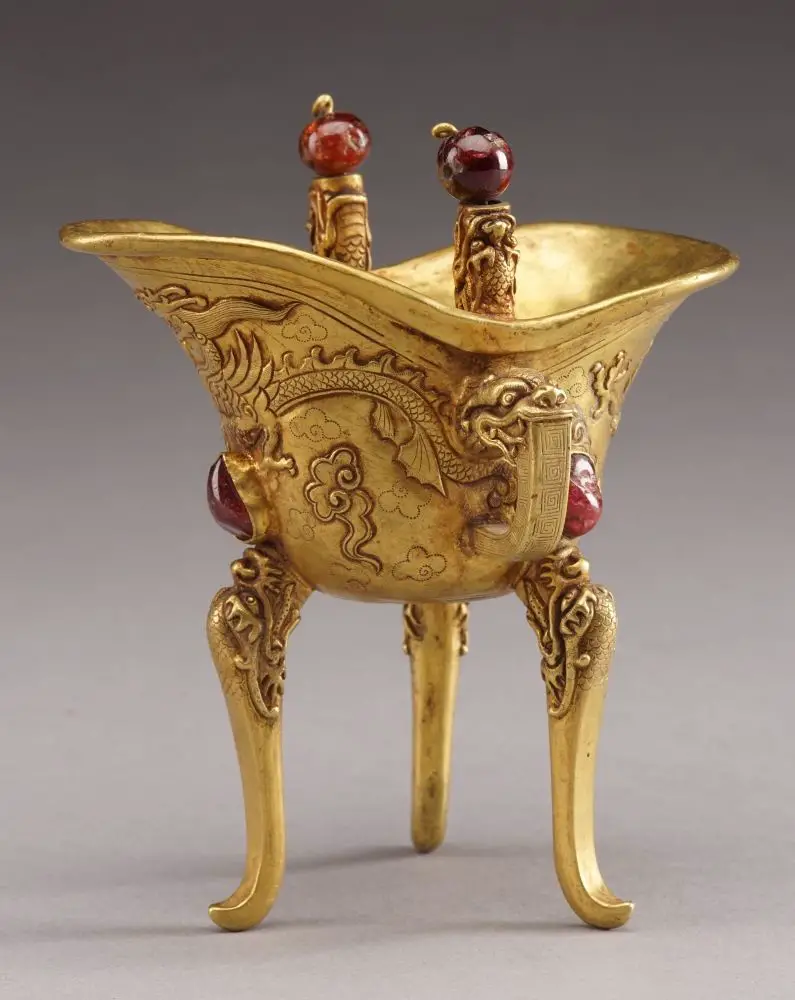
Photo: Wang Wei Chang
Meanwhile, the museum's Metelkova branch, located between one branch of the Moderna galerija and the Ethnographic Museum has some rooms on Church art, furniture and weapons, with the latter including more guns than you'll see anywhere else in town, and quite a thrill if coming from a nation where such objects are not household items.
Slovene Ethnographic Museum – The museum currently has a temporary show on Bees and Beekeeping, as well two permanent exhibitions. One of these is called Between Nature and Culture, and has a great collection of objects from Slovenia and around the world, well worth the trip up to the third floor to see it (as recounted here). This place is located near the newer branch of the Moderna galerija and Metelkova.
Photo: JL Flanner
Union Experience – The Ljubljana-based brewer has a museum showing the history of the company, with the ticket also including access to part of the factory and a few samples of the product. You can read about our visit here.
It's not a formal museum, but if you're interested in "Yugo-stalgia" then you'll enjoy a trip to Verba, a small, privately run space that's crammed with objects and pop culture items from the era, and is conveniently located at the start of one of the short walks to the castle. It's also a great place to take pictures, if you leave a donation, and you can read more about it here.
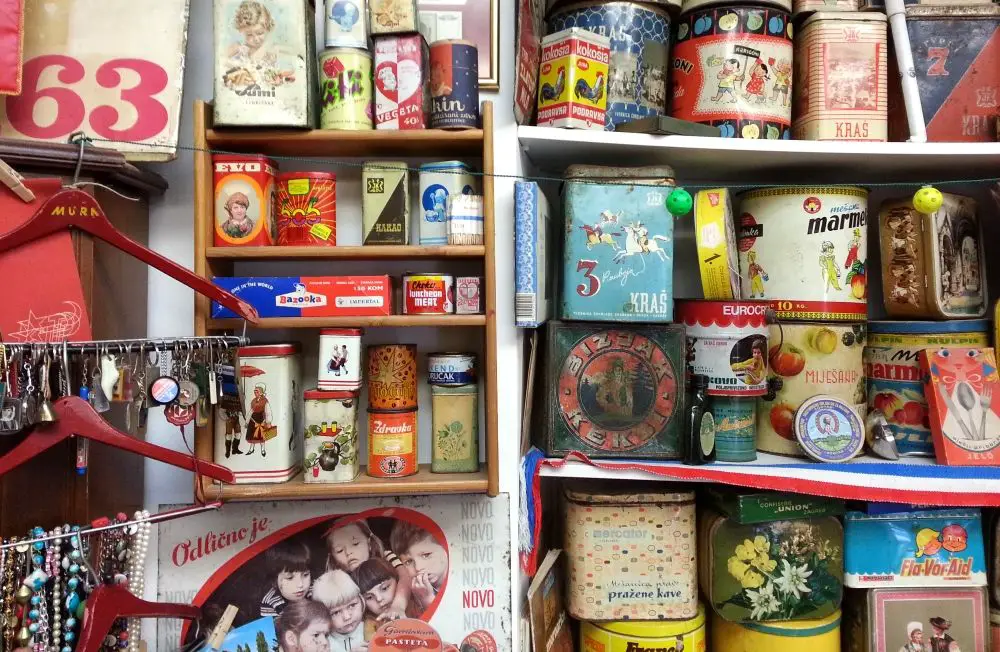
Verba. Photo: JL Flanner
Alternative Ljubljana isn't a museum or gallery, as such, but instead turns the city streets into a museum and gallery. Learn more about their tours of street art, history and LGBT Ljubljana here.
Live music in Ljubljana
Cankerjev dom – Tuesday evening there’s Midori on the violin and Özgür Aydin on the piano playing Bach, Schubert, Franck and Respighi.
Gala Hala - Thursday night there’s Domorodni četrtki: Blue Town's Radio.
Klub Gromka – Tuesday there’s Limun Up, with Canshaker Pi and 21 Vek, the former said to be the best live band in the Netherlands. Thursday there’s another double bill, Last Rizla (Greece) and Drobovina, playing post-punk, stoner, and sludge metal.
Kino Šiška – Friday you can enjoy Marko Louis, with an aftershow from DJ Zeds and DJ Bayo, then on Sunday there’s music from Keziah Jones.
Ljubljana Castle – Friday is music night at the castle, and this week sees a show by Akordika.
Orto Bar – Wednesday evening, from 20:00 on, you can celebrate 15 years of the Rock Partyzani, plus guests. Friday Letu Štuke take the stage. The third show of the week comes from Avtomobili.
Slovenska filharmonija – Thursday evening it’s baroque music with a programme of Vivaldi and Bach. Friday there’s then a choir concert on the 90th anniversary of composer Jakob Jež
Opera, theatre and dance in Ljubljana
There’s an international improv festival, held in English, going on this week, with the name Naked Stage (Goli odor). Most the shows will be in Elektro Ljubljana, not far from Metelkova, with more details here.
Kino Šiška – A short bus ride or taxi from the centre, this venue is hosting events that are part of the dance-based CoFestival, November 23 to 29, with the official website here and the programme here (Slovene, but easily translated by a machine). Among the delights, Lucinda Childs: Zgodnja dela (Early Works 1963 – 1978).
Gledališče IGLU - IGLU Theatre – Saturday night this group is usually putting on an English improv show somewhere in town, but it’s generally promoted after this is written, so check the Facebook before putting on your shoes.
Pocket Teater Studio – Friday night there’s CoraViento at Noches de Tablao, a Slovenian tango troupe. The venue is tiny, and so it’s important to make a reservation via This email address is being protected from spambots. You need JavaScript enabled to view it. in 070 325 522. The price of ticket is 20€ (15€ for students) and includes wine during the whole performance.
SNG Opera and Ballet – Nothing seems to be on here this week.
Other things to do in Ljubljana...
From November 2 to 30 there’s the Gourmet Ljubljana Festival, with a full programme of culinary events, as detailed here.
If you'd like to spend an evening painting with others, then take a look at Design with Wine, which organises painting parties on Trubarjeva cesta,
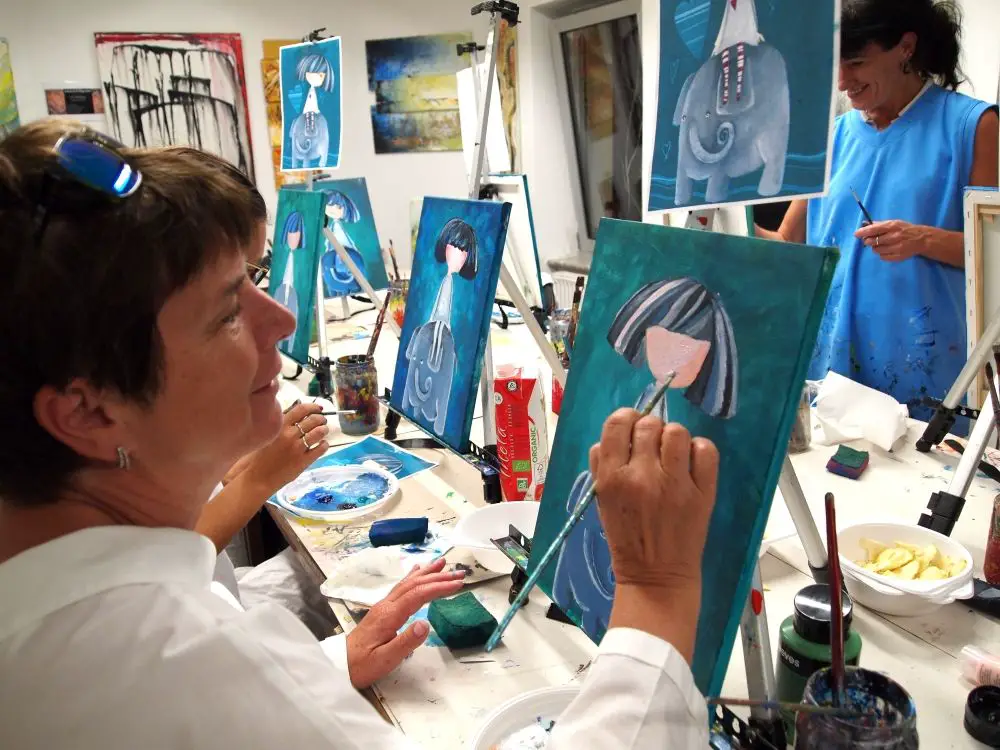
Breg Embankment, just opposite the Old Town and by the river, has a small flea market open every Sunday morning. Learn more about it here.
If you can't make it to Breg on Sunday morning, but still want to see some antiques, then check out the wonderful Antika Carniola, as discussed here. The man behind it, Jaka Prijatelj, has a fine eye for life on this street, as you can see at the top of this page, with more on his Facebook account.
Photo: JL Flanner
If you’re in town and want to go jogging or walking in nature, why not take another look at the Castle, with a brief guide to the trails here. If you want something bigger, head to Tivoli Park.
And if you're bored with the Old Town, why not take a walk, cycle or boat ride to nearby Špica and enjoy the riverside life. Learn more about that here.
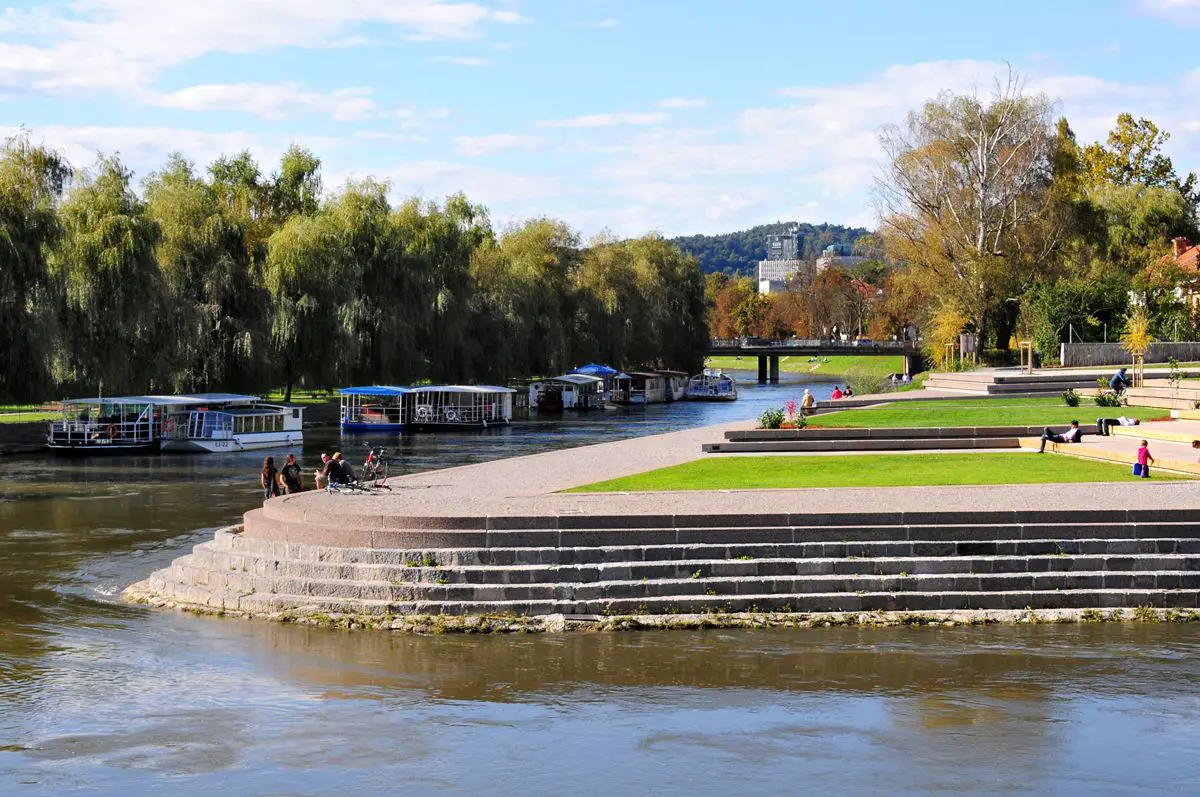
visitljubjana.si
![]()
maxpixel.net, public domain
Want to stretch and breath? Then check out our list of drop-in yoga classes for tourists, visitors and the uncommitted. If you're heading to the coast, check out our interview with a yoga teacher who offers breakfast sessions there, while if you're staying in town (or nearby) and want to try some "family yoga" then you can learn more about that here and maybe get your kids to calm down a moment or two.
There are some golf courses near Ljubljana, but even ones further away are not far, as seen in our list of all the golf courses in Slovenia.
![]()
Photo: maxpixel.net, public domain
Daytrips from Ljubljana
Most of Slovenia is only a few hours from Ljubljana, and you can easily visit Lake Bled, Lipica Stud Farm, Postojna Cave, Predjama Castle, the coast and other locations, while if you'd like to take a photo of from that bench in Bled, then you can learn how to get there here. If you’re looking for something more ambitious, then check out our recent guide to the 17 members of the Association of Historical Towns of Slovenia
Finally...
You can see all our stories tagged Ljubljana here.
STA, 23 November - Slovenia fares below average in terms of hate speech being removed from social media in 24 hours after such a case is reported, according to findings from 14 European countries. Facebook, Twitter and YouTube removed only 24% of such cases in Slovenia, as opposed to the average of 31% for all the countries taking part.
A campaign to check the social media giants' reaction to hate speech was carried out as part of a European project to fight hate speech and fake news.
NGOs tested their reaction as the social media committed to a European Commission code to remove hate speech from their platforms in 24 hours since it was reported.
In the period from March to May, the social media were notified of more than 700 cases of hate speech, Slovenian NGO Ekvilib Institute said on Friday.
Hate speech was categorised as racism, anti-Semitism, sexism, homophobia, hate towards the Roma, Muslims and migrants, and genocide denial.
Faring the worst was Twitter with 15%, followed by YouTube with 22%, while Facebook removed as many as 55% of all contentious cases.
Ekvilib said social media were more actively removing hate speech in the countries where the authorities and NGOs address this issue more seriously.
France did best, Norway the worst
France did best with 56% of all problematic content removed within 24 hours, but Ekvilib noted that in Slovenia, hate speech was only rarely prosecuted.
It also stressed that the Council of Europe had recently urged the country to intensify its fight against hate speech, especially in the public domain.
The worst results were meanwhile recorded in non-EU members, for which the EU's code does not apply: Norway (7%), Ukraine (11%), Turkey (24%) and Montenegro (30%).
The campaign was also carried in Austria, Croatia, the Czech Republic, France, Germany, Italy, Latvia, Poland and Great Britain.
The anti-hate speech project is run by the European Grassroots Antiracist Movement from France and funded by the European Commission.
All out stories on hate speech in Slovenia can be found here
November 23, 2018
If you’re looking for a fun activity for the upcoming weeks of cold and darkness, how about this one: turn your kitchen into a research lab and figure out the best way of bringing Jerusalem artichoke and/or cherry plum to a plate.
The EU sponsored project is called Alien Plant Species / from harmful to useful with citizen-led activities, in Slovenia it is being carried out in cooperation with the Institute of Chemistry, Ljubljana city government and Faculty of Natural Sciences and Engineering and it includes a competition for the most innovative dish made with Jerusalem artichoke (Helianthus tuberosus, also sunroot, sunchoke, or earth apple) and/or cherry plum (Prunus cerasifera, also myrabalan plum). Contestants are free to choose other ingredients as they like.
You have about a year to figure out your recipe, as you must send this, along with a picture of the dish, to This email address is being protected from spambots. You need JavaScript enabled to view it. before September 30, 2019.
The winning authors will receive a plaque and their recipes will be presented at a festival on the use of invasive alien plant species in October 2019, where with any luck they’ll be standing alongside Ana Roš or some other Slovenian celebrity chef.
STA, 22 November 2018 - The iconic Alpine lake of Bled is to become even cleaner as the local authorities have purchased an electric vessel which will be used to clean the surface of the lake, removing leaves and various waste, such as plastic bottles and bags.
The floating electric robot has been purchased on an initiative of the rowers of the traditional Pletna boats, which are used to take tourists around the lake and to the picturesque Bled Island.
Funded from the fees that the local authorities collect from the various users of the lake infrastructure, the device is the first of its kind in Slovenia and this part of Europe, the Municipality of Bled announced on Thursday.
The vessel will be collecting various waste and debris on the lake surface and will cause no additional pollution, as it does not use fossil fuel.
Jakob Bassanese of the municipal utility Infrastruktura Bled, which will operate the vessel, said that this was yet another solution with the aim to contribute to the sustainable management of the lake, which attracts an increasing number of tourists.
The device produced by the Swiss company Grove Boats is actually a prototype, Bassanese said, adding that the vessel had arrived at Bled about week ago and that the initial tests yielded satisfactory results.
The remote-controlled vessel, whose batteries can last for two hours and which can carry rakes and nets of various densities, will be docked in the bathing area just below Bled Castle.
On Sunday, the bottom of the lake will meanwhile be inspected by divers in a campaign initiated by the organisers of the Bled Water Festival, a leading festival in the region in the field of water innovation.
Another campaign to clean up the bottom of the lake will be organised in the spring by the Slovenian Diving Association in cooperation with the local diving club.
The drink driving limit in Slovenia is a low one, and the penalties are strict.
Tonight, November 22 2018, a concert will be held in Ljubljana featuring the Police Orchestra and Vlado Kreslin. The occasion for this special event? A seasonal reward for drivers who were stopped around the St. Martin’s Day (Martinovanje) celebrations and achieved 0.0 on a breathalyser test. It’s a timely reminder as the season for office parties and social drinking is approaching that death on the roads doesn’t take a vacation, and that in addition to your own drink driving behaviour it’s a good idea to keep an eye on friends and loved ones at this time of year, and to plan for one sober driver or a taxi if needed.

The various drink driving limits in Europe. Wikimedia, public domain
The legal limit for ordinary drivers is Slovenia is 50 mg of alcohol per 100 ml of blood or 0.24 milligrams of alcohol per litre of exhaled air, while for beginners, professional drivers and other special groups total sobriety is required at all times.
Ideally no drivers should drink, but as a ready reckoner 350 ml of beer, 150 ml of wine and 5 ml of spirits will keep you under the limit, while two such drinks will put most people under 70 at or over the threshold, with gender, time since the alcohol was consumed, and food in the stomach being additional factors that influence the results.
The organization International SOS has produced the latest edition of its Travel Risk Map, finding Slovenia one of only eight countries in Europe deemed to have an “insignificant risk”, along with Luxembourg, Denmark, Switzerland, Norway, Finland, Iceland and Greenland. Outside of Europe, the Seychelles and Cape Verde were also rated low risk destinations, based on factors such as political violence, crime, and social unrest, as well as transportation infrastructure, susceptibility to natural disasters, and the abilities of emergency and security services.
All other European countries were rated “low risk”, apart from Kosovo and Turkey, which gained “medium risk” status. The countries which were seen as presenting “extreme risk” for travelers were Mali, Libya, Central African Republic, South Sudan, Somalia, Yemen, Syria, Afghanistan, and parts of Iran, Pakistan and Nigeria.
In addition to security issues, International SOS also produces maps looking at medical risk and traffic safety. For the former, Slovenia – along with most of Europe – was seen as a low risk destination, while for road safety it gained a “low” rather than “very low” rating, the same as Italy, the other Balkan nations and Eastern Europe.
More details, along with the maps and the methodology behind their production, can be found here.
See all our stories about statistics and studies related to Slovenia here
December in Ljubljana is a magical time, and this year the magic starts a week early, with a riverside ambience of fire providing the setting for an evening of music, dance and theatre.
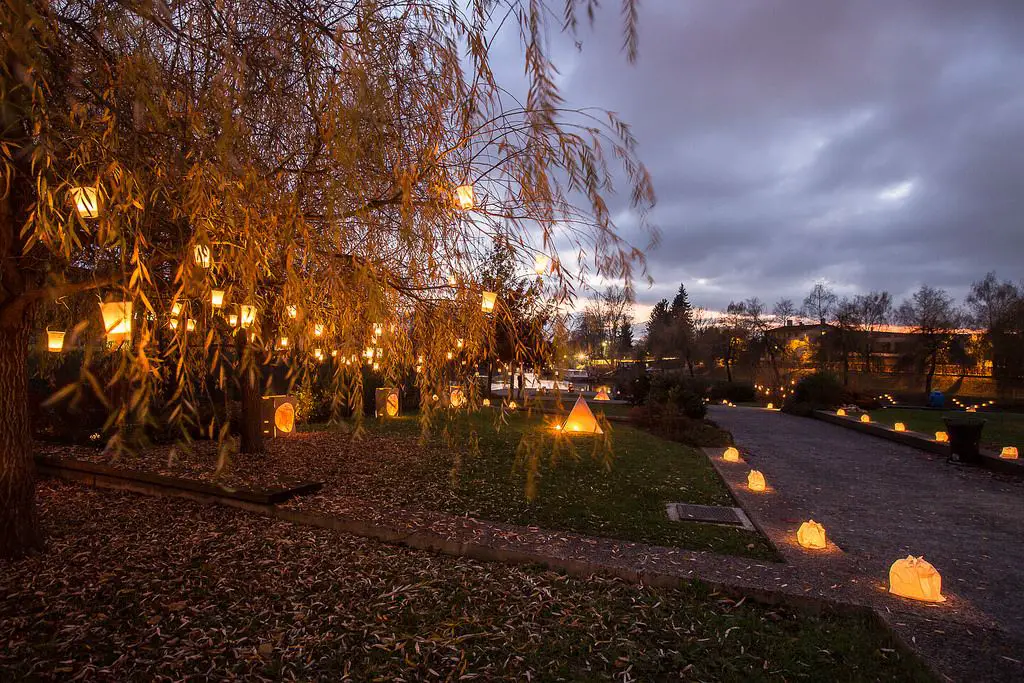
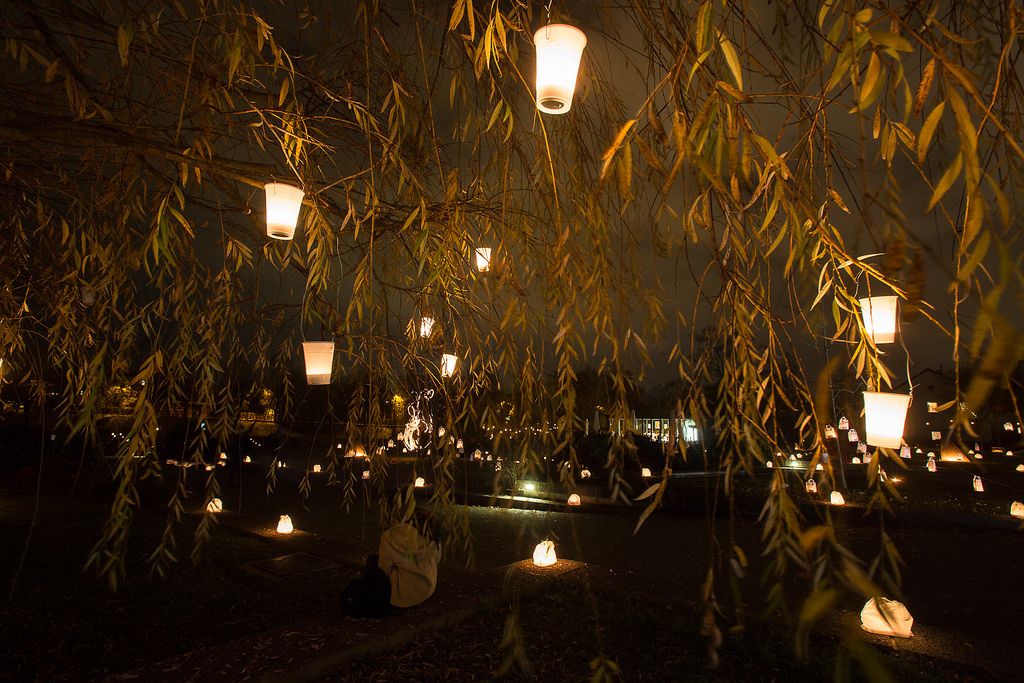
The summer’s most delightful festival in Ljubljana is, in my opinion, Ana Desetnica, which for more than week brings an international programme of street performers to the capital, with music, comedy, magic and drama livening up the city’s bridges, squares and street corners. The same organisation behind that event, Gledališče Ana Monro, is organising an autumn festival, Ana Plamenita in Špica, Ljubljana, this Saturday, November 24th, from 17:00 to 21:00, although if the weather’s bad the event will be moved to Sunday. (Check the Facebook page for details.)
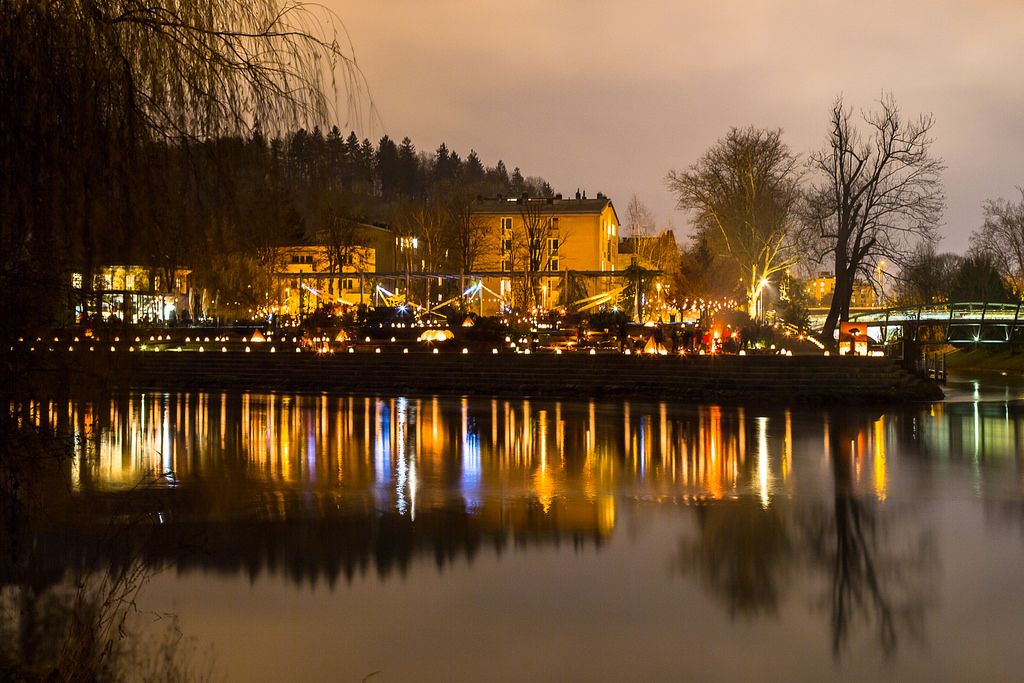
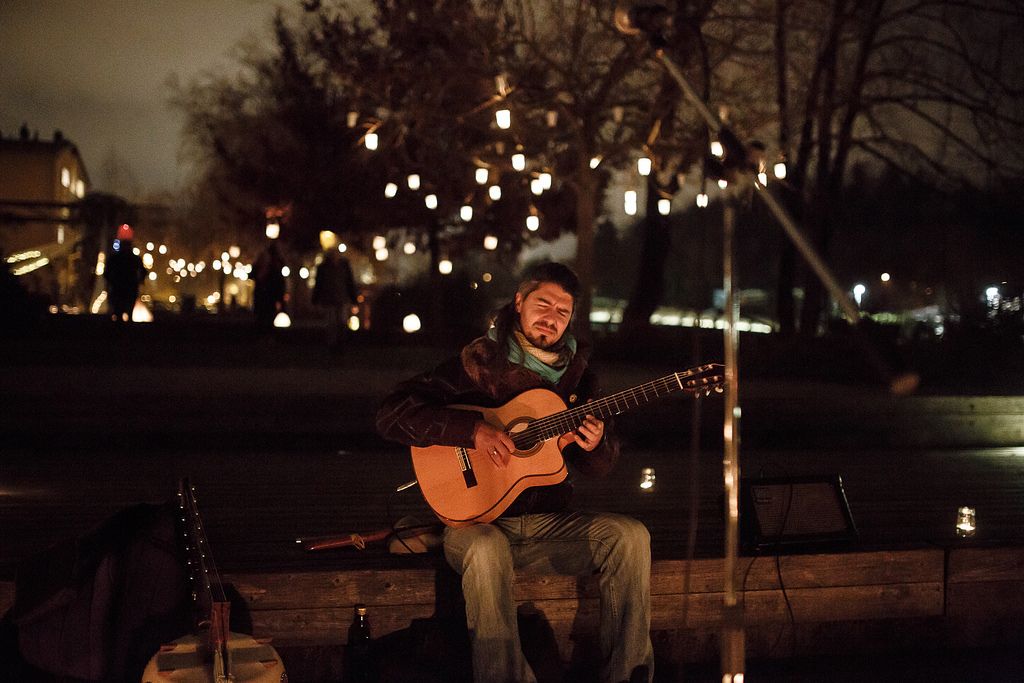
The unofficial start of Festive December in Ljubljana
In previous editions this has seen fire-based installations and performances lighting up various locations around town and this year the magic is set to take place just a short walk upriver from the centre of town, at Špica, which also hosted the event in 2017, when these pictures were taken.
Related: Špica – a riverside retreat not far from Ljubljana’s old town
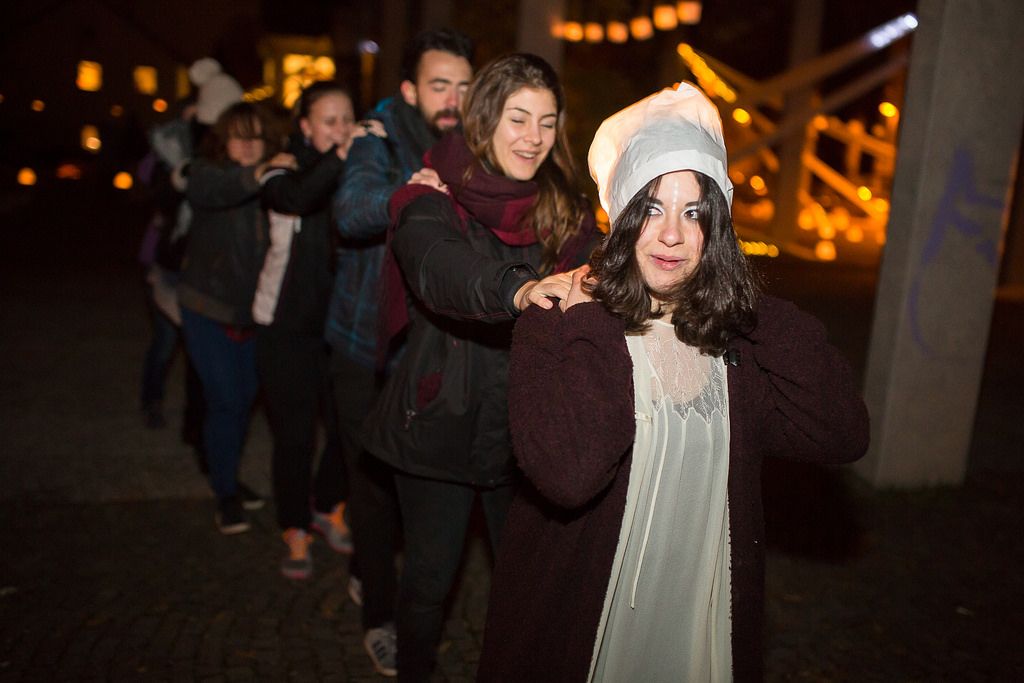
On arriving at the site of Ana Plamenita you’ll see an area transformed with fire and light, set up in creative displays to bring magic to an autumn evening, and just a week before the lights are turned on in Ljubljana. Of course, where there’s light there’s shadow, and shadow-play will be a special feature of this year’s festival, with workshops and creative areas set-up for you to make your own lanterns and dolls.
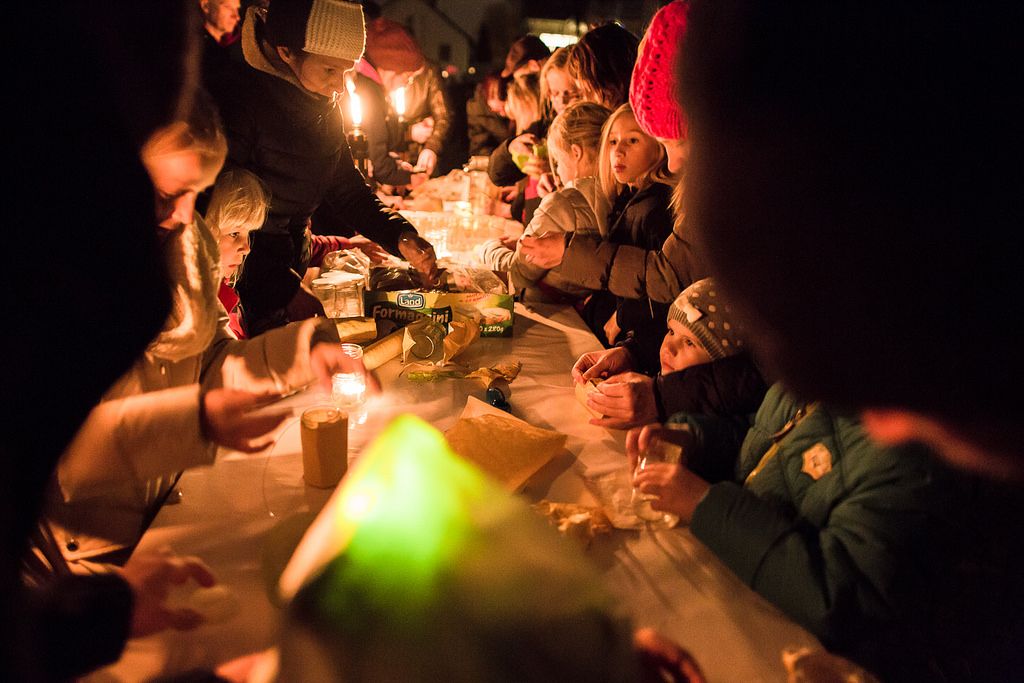
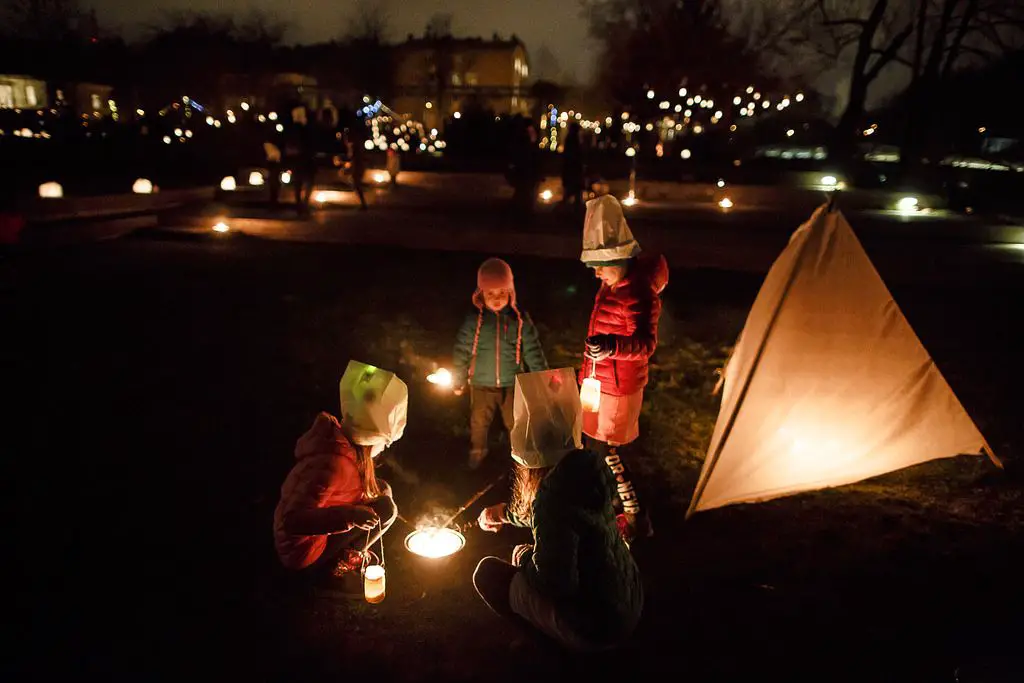
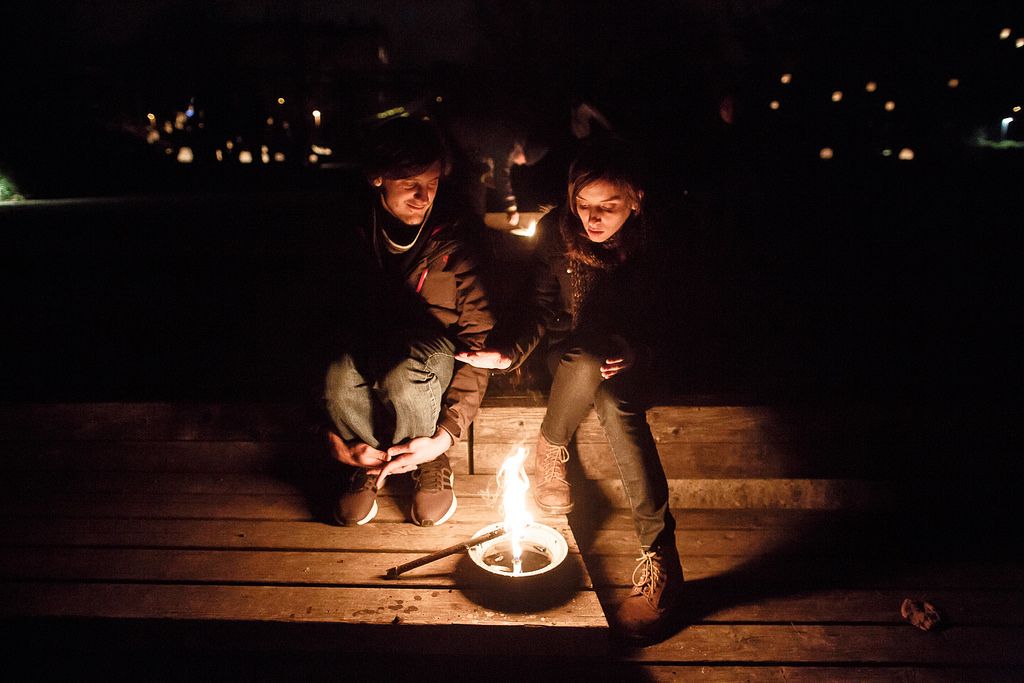
While surprise remains a key element of the evening, expect performances from various artists making use of the ambiance, with paper giants and a creature in the Japanese shade garden, as well as Tango Pop dancing in the streets. In addition to such displays visitors will be pleased to note that the Špica Caffe will be open should you need a warm drink on a cold evening.
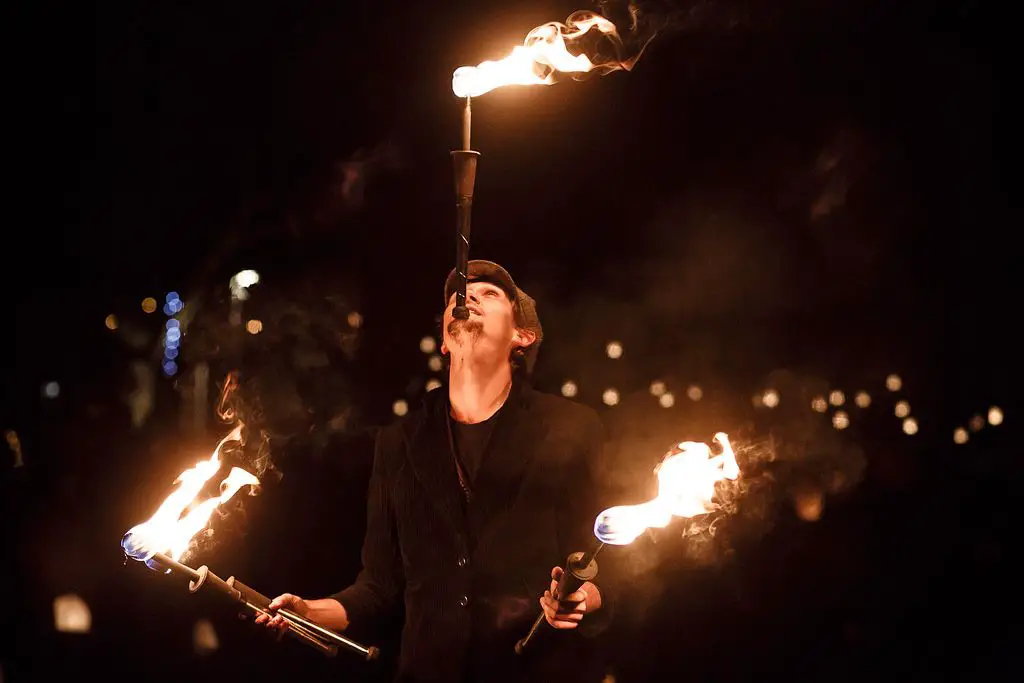
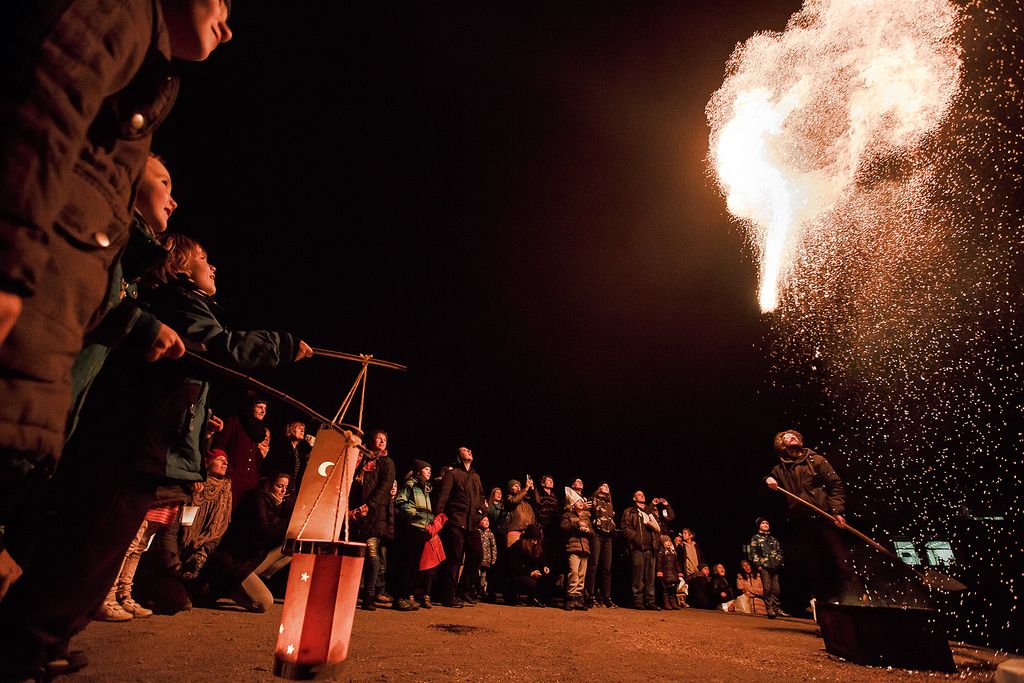
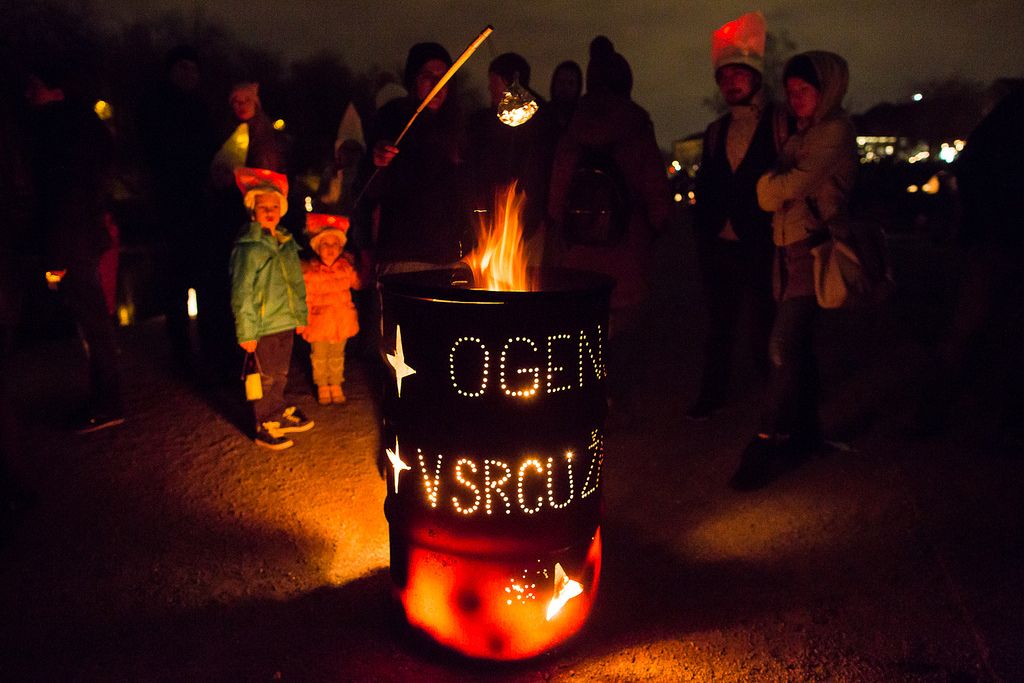
Ana Plamenita is on this Saturday, November 24th, 17:00 to 21:00, weather permitting, and check the Facebook, Instagram or website (Slovene only) for details of that. And if you can’t make this event then don’t worry, as Ana Monro is back in town at the end of December with the winter edition of its street theatre festival, Ana Mraz.
